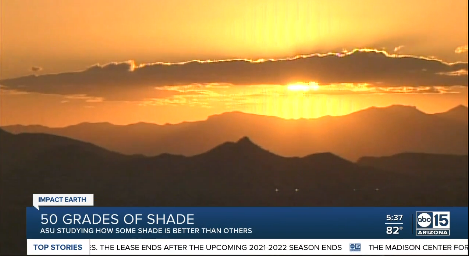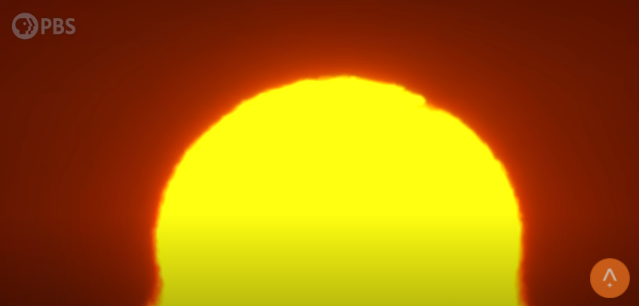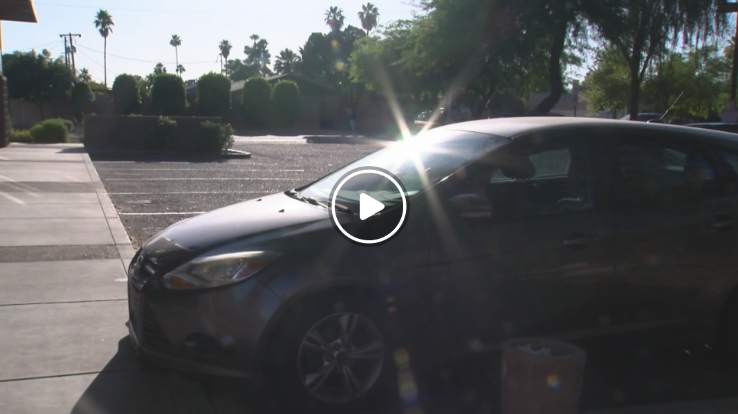SHaDE News
Articles
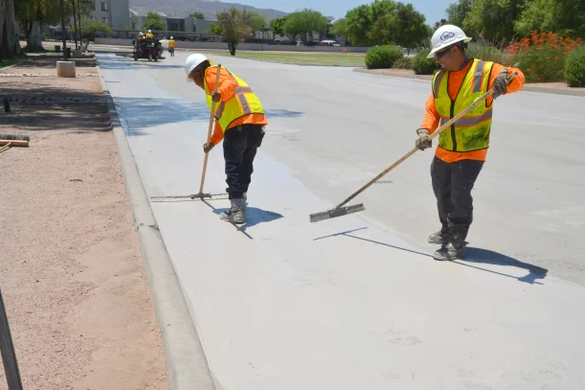
CNN (August 2022): These cities are better at enduring extreme heat. Here’s what they’re doing different
Air conditioners might keep the indoors cool, but they only add to heat outdoors. And in most cases, they are adding to the climate crisis by increasing planet-warming emissions. Public transportation may be unbearable on a hot day, but driving a car that runs on gas instead just worsens traffic, also adding to heat and emissions. A lack of trees means a lack of shade, and buildings made of dark materials bring hotter interiors, which means more air conditioning.
It’s a vicious cycle, but there are other solutions.
Here’s how eight cities are taking some of the heat out of their summers.
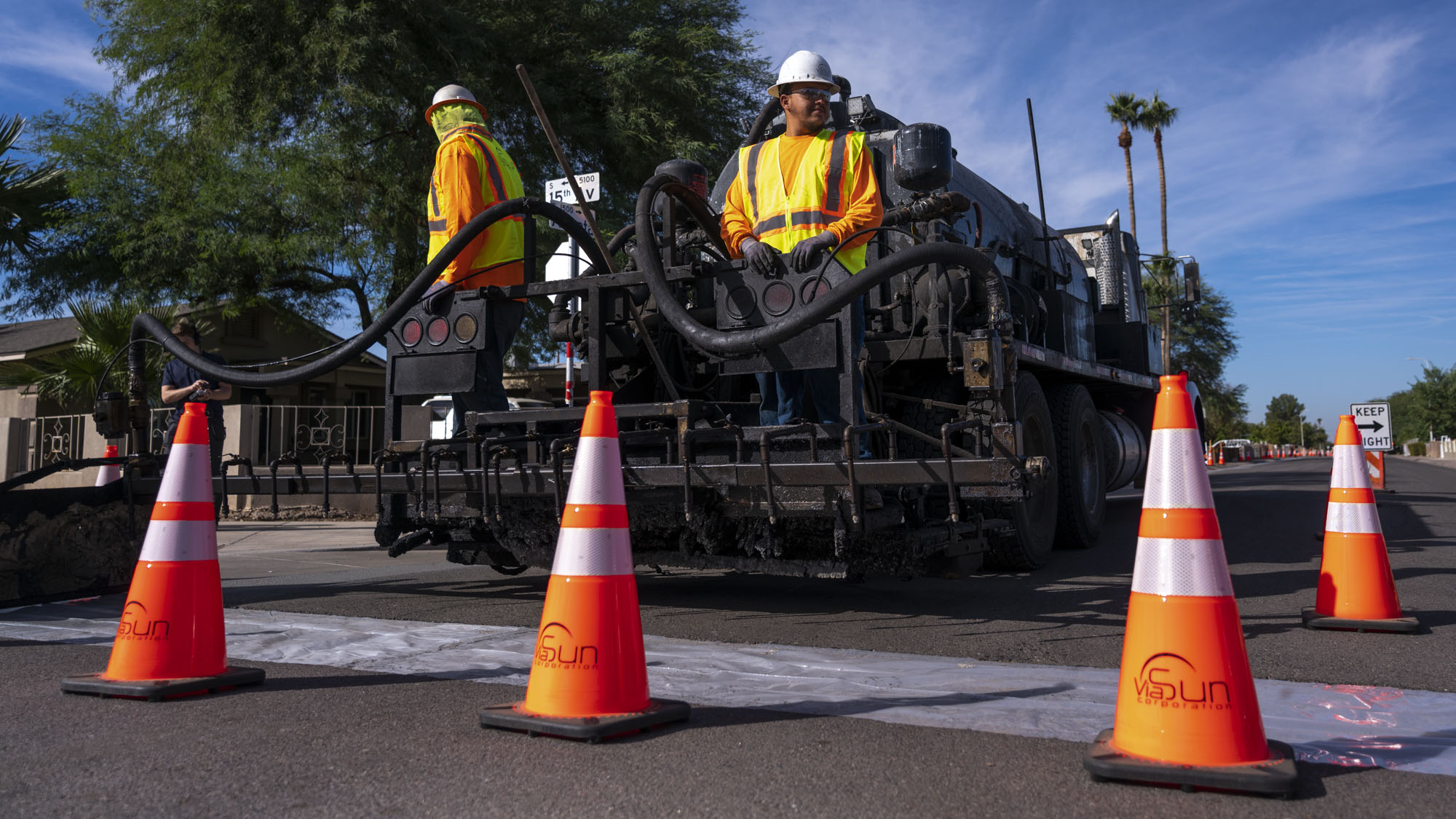
Phoenix Newsroom (March 2022):
Cool Pavement Program Earns Innovative Transportation Solutions Award
Cool pavement program honored by Arizona Forward
The Phoenix Street Transportation Department's Cool Pavement Program was honored by the WTS Metropolitan Phoenix Chapter as the recipient of its 2022 Innovative Transportation Solutions Project of the Year award. The department will be officially recognized during an awards ceremony this fall.
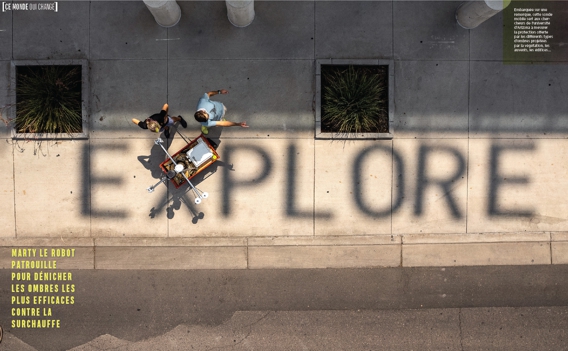
GEO (January 2022): Phoenix, métropole la plus chaude des Etats-Unis et laboratoire du changement climatique
Trois cents jours de soleil par an ne font pas forcément le bonheur. La capitale de l’Arizona est comme un four en plein désert, et ses habitants luttent déjà, au quotidien, contre les méfaits du dérèglement climatique. Leur ville est même devenue un laboratoire pour nos cités de demain.
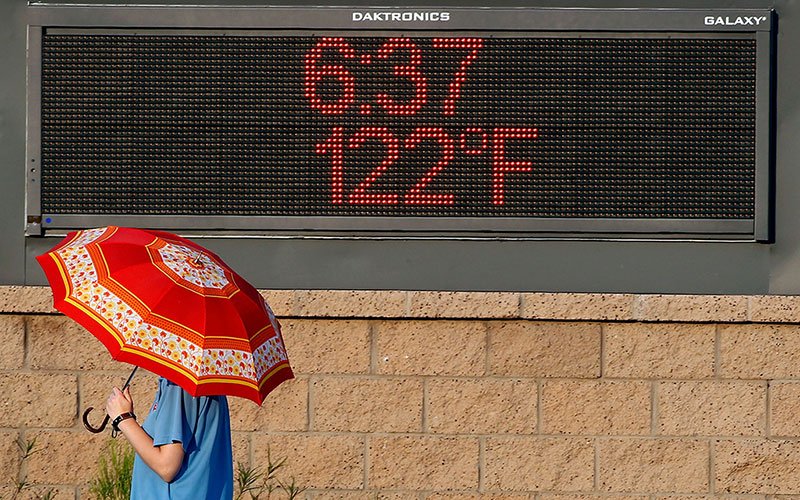
Cronkite News (October 2021): Silent storm: Extreme heat prompts new national guidelines for workers
In Phoenix, which is one of the fastest warming cities in the country, the urban heat island effect contributes to the extreme heat. Ariane Middel studies urban heat scapes and how pedestrians experience heat at Arizona State University.
“As the sun hits the surfaces during the day, they store the heat, almost like a battery, and then at night they release the heat slowly,” Middel said. “So when you look at the air temperature difference in the evening and at night between the desert and the city, the desert will be cooler and that’s the urban heat island. The city stays warmer at night than the surroundings because of asphalt and the concrete.”
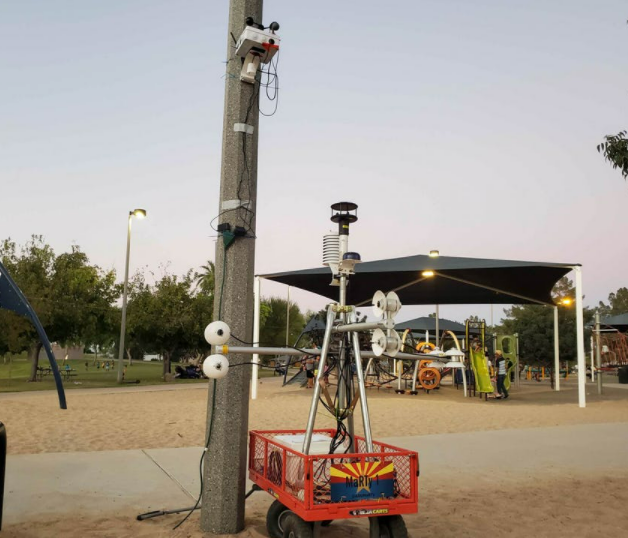
The State Press (October 2021): A new kind of MaRTiny: ASU researchers hope device will help gather heat data
From dawn 'til dusk, Florian Schneider sat and waited at Kiwanis Park on Saturday and Sunday.
With him were MaRTy and MaRTiny — biometeorological devices able to measure factors of heat: air temperature, humidity, wind speed and direction, location and more.
For Schneider, the location provided the opportunity to test MaRTiny for the first time in the field, and being there all day would show how measurements of those variables change over the course of time.

Scientific American (October 2021): To Beat the Heat, Phoenix Paints Its Streets Gray
A study by Arizona State University and the city of Phoenix found that applying a reflective, gray-colored emulsion material to black asphalt resulted in a 10.5- to 12-degree-Fahrenheit drop in average road surface temperatures...
But reflective pavements don’t affect all surfaces the same way. Ariane Middel, an urban climatologist and assistant professor at Arizona State, said in a release that “the most meaningful measurement” was of radiant temperatures, a measure of how the body experiences heat.
Those measurements—taken by researchers walking treated streets pulling a small cart equipped with meteorological sensors—showed that the “human experience of heat exposure at noon and the afternoon hours was higher due to surface reflectivity, but similar to walking on a typical concrete sidewalk.”
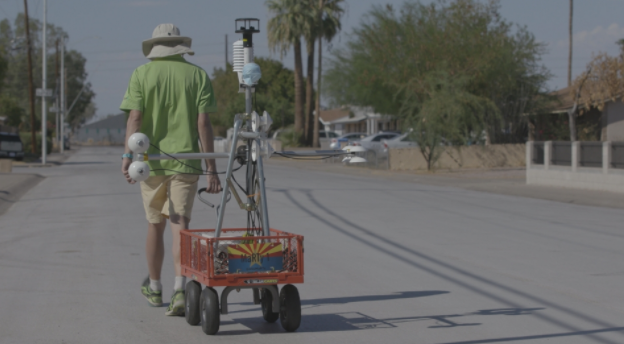
ASU Now (September 2021): Trying to cool off neighborhoods with a new kind of road surface
“Looking specifically at the radiant temperature in the neighborhood, we did vehicle traverses that measured the air temperature distribution, and then we also did helicopter overflights to take surface-temperature photos of those neighborhoods, and compare the cool pavement neighborhoods to the ones with the regular asphalt,” said Middel, an assistant professor in both the School of Geographical Science and Urban Planning, and the School of Arts, Media and Engineering.
Surface temperatures of the roads with the reflective CoolSeal layer stayed cooler than non-treated streets at all times of the day; as much as 10 to 12 degrees cooler at noon, and almost two and a half degrees cooler at sunrise.
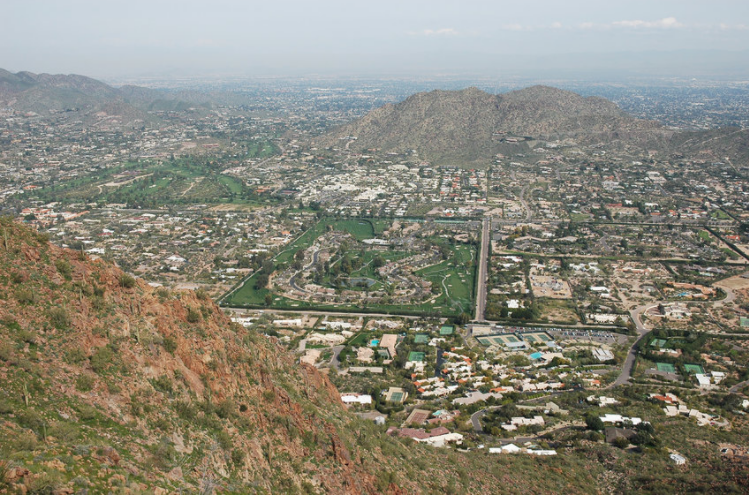
AZ Big Media (September 2021): Here’s how cool pavement pilot program is impacting Phoenix
As the fifth-most populated and one of the fastest growing cities in the country, development in Phoenix is spread out over nearly 5,000 miles of paved roads...
...the City of Phoenix Street Transportation Department, in coordination with the City of Phoenix Office of Sustainability, ASU Global Institute of Sustainability and ASU Urban Climate Research Center, shared the results of scientific testing on cool pavement treatments spread throughout Phoenix in 2020 to evaluate next steps for the pilot program...
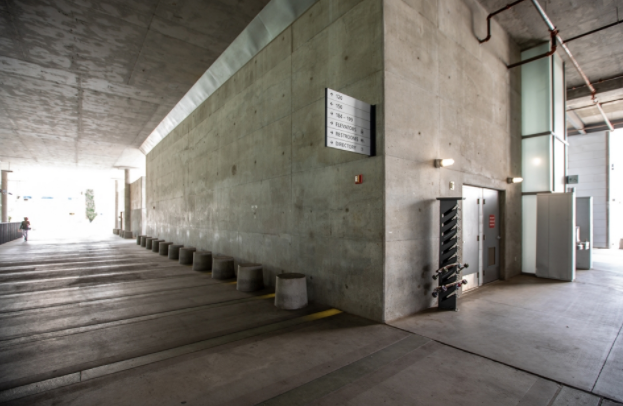
ASU Now (August 2021): Staying cool for back to school
Shade is your friend
When you have to go outdoors, remember that shade is crucial. On the Tempe campus, there’s plenty of shade in and around the Memorial Union, a popular gathering spot to eat and visit. That comes courtesy of the shade sails, awnings or building overhangs that ASU constructed, vital to creating pedestrian-friendly outdoor spaces in desert cities. Natural shade such as trees can also offer a respite from the heat.
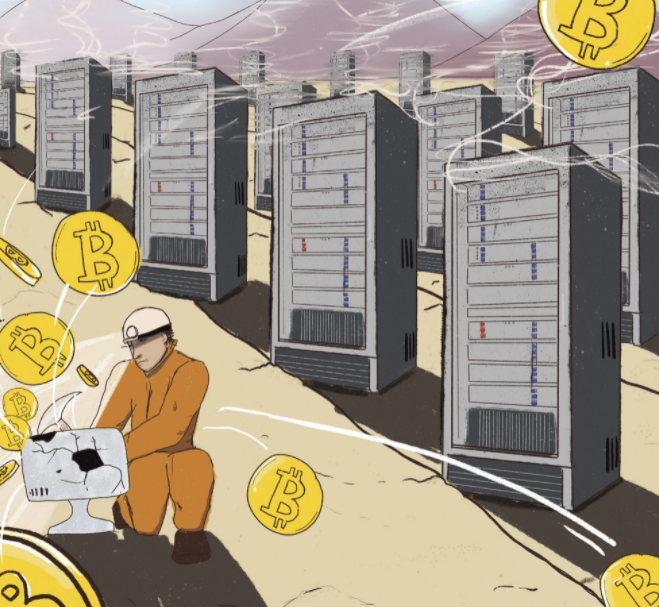
Phoenix Magazine (July 2021): The Bitcoin Industry’s Environmental Impact
Bitcoin mining consumes a lot of energy, and its servers produce a prodigious amount of heat. By some estimates, the global Bitcoin network consumes 120 terawatt-hours per year – more than the entire country of Argentina – and a recent University of New Mexico study found that mining $1 of Bitcoin created 49 cents in health and climate damage.
For Arizona, a state plagued by heat-island effects and other environmental challenges, this all can’t be good news, can it?
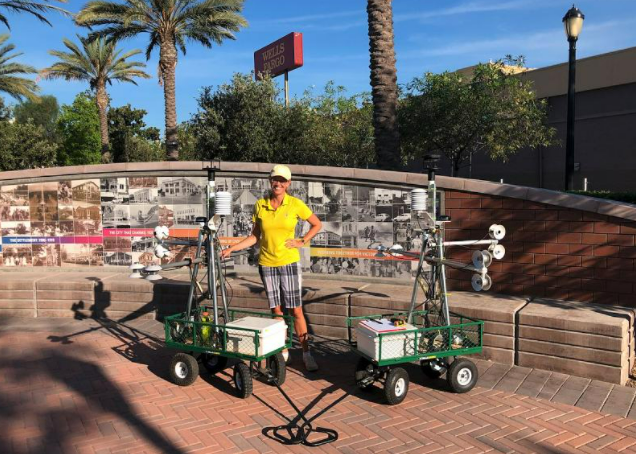
Euronews (July 2021): Living in a heatwave: How to design the climate-proof cities of tomorrow
"On clear, sunny days, asphalt and concrete heat up as the sun hits the surface, and they slowly release the heat after sunset. This is called the Urban Heat Island effect," urban climate expert Ariane Middel from Arizona State University explained.
That's why LA has been painting its roads a lighter shade of grey. Its StreetsLA pilot project has applied the coating to over 50 city blocks, with plans for 200 more to be treated in the same way.
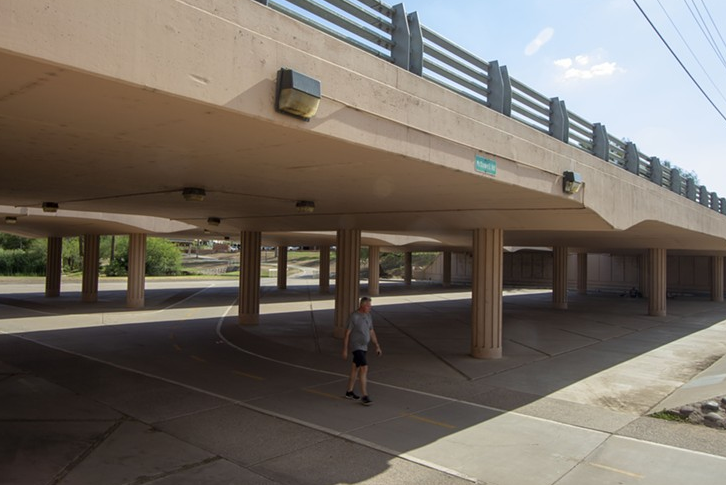
Phoenix New Times (July 2021): No Shade: Why Is It So Hard to Hide From the Sun in Phoenix?
In the Sonoran Desert, shade helps define the landscape as much as sun-loving cacti like saguaros and cholla, and it increases the region's renowned biodiversity.
Planners understand that man-made shade can involve trade-offs or negative consequences. This is where "Fifty Grades of Shade" comes in. That's the title of Ariane Middel's team's latest paper, published in the Bulletin of the American Meteorological Society's May edition. With colleagues Saud Alkahaled, Florian Schneider, Bjoern Hagen, and Paul Coseo, plus a robot-looking device named MaRTy, they made scientific observations throughout Tempe that city leaders can use to figure out the best way to make shade.
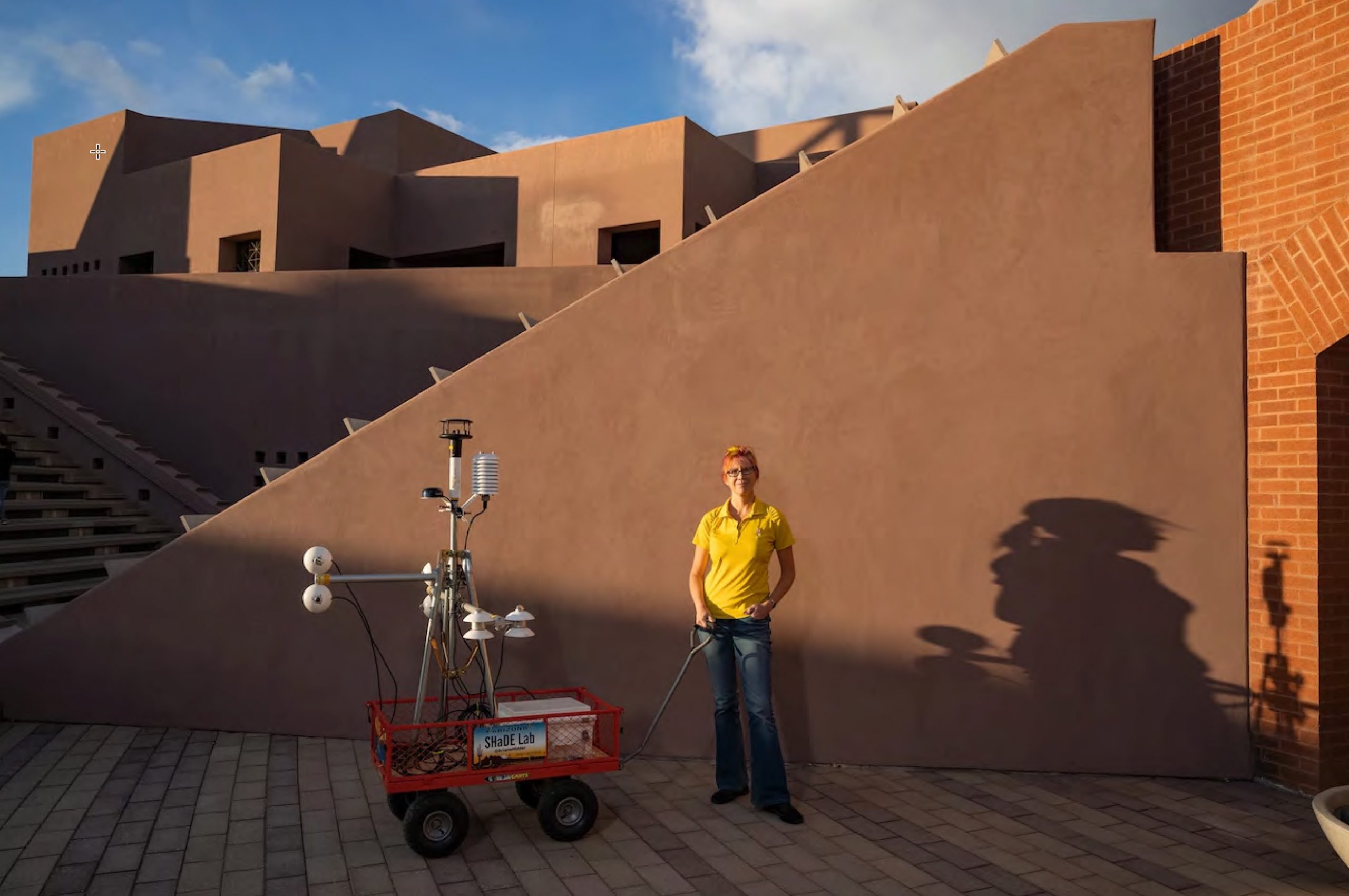
National Geographic (July 2021): Too hot to live: Millions worldwide will face unbearable temperatures
A warming climate is likely to force entire regions to the brink of their comfort zones and make staying cool a matter of surviving.
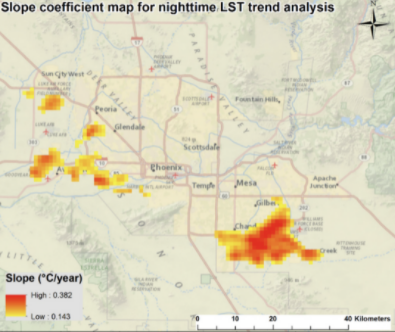
ABC News (May 2021): Climate change and urban development leading to warmer nights in Phoenix
Nearly five million people live in the Phoenix metro area, and according to the United States Census Bureau, from 2010 to 2020 we led the nation in population growth.
According to city records, Phoenix occupied just 17 square miles in 1950. That figure was up to nearly 517 square miles by 2010. A growing city on top of an already hot desert has amplified the heat, so it just does not cool off at night like it used to.
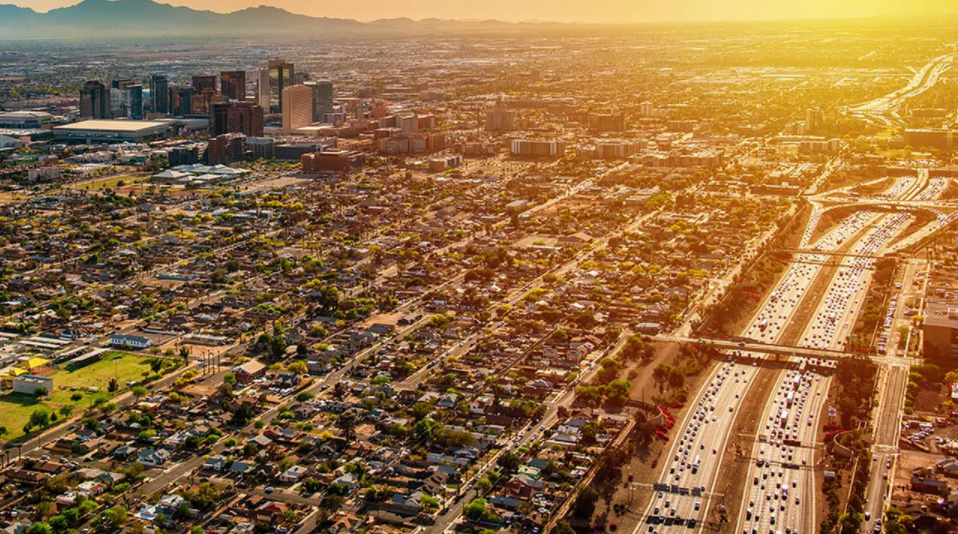
Les Echos (February 2021): Climat: À Phoenix, le rude combat pour faire baisser la température
La capitale de l'Arizona, qui fait face à des canicules de plus en plus extrêmes et meurtrières, multiplie les initiatives pour se rafraîchir et préserver son attractivité. Elle inspire d'autres métropoles en surchauffe.
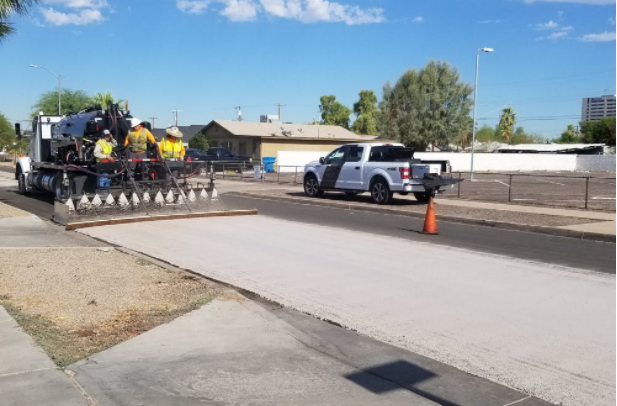
Arizona State Press (November 2020): ASU team joins Phoenix in fighting extreme heat through cooler pavement
Earlier this year, Phoenix began their Cool Pavement Program after observing a similar project in Los Angeles.
The city recruited an ASU team — led by Ariane Middel, an assistant professor with the School of Arts, Media and Engineering, and Jennifer Vanos, an assistant professor with the Sustainability Scientists and Scholars — to conducts a series of tests that measures the air, surface and radiant temperatures of the pavement, as well as durability and public perception.
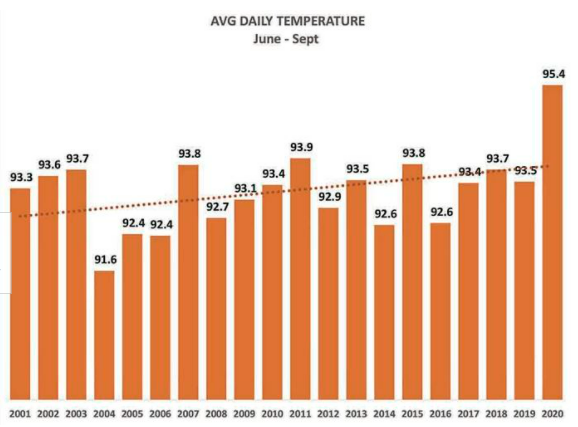
Ahwatukee Foothills News (October 2020): Extreme heat could be with us for years
Every city has its definition of extreme heat – in Phoenix, it’s 112 degrees. According to Austin Jamison, a meteorologist at the National Weather Service in Phoenix, August and July were the two hottest months recorded in Phoenix since official record keeping began in 1896.
The increasing heat over the next few years will not affect Arizona residents equally, and Phoenix has projects in place to prepare for this, said Ariane Middel, a senior scientist at the Global Institute of Sustainability and Innovation at ASU.
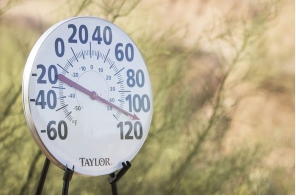
Tucson Sentinel (October 2020): Arizona will have more 'extreme heat' days, researchers say
Arizona will experience more days of extreme heat in the coming decade, according to an Arizona State University study that comes on the heels of the state’s hottest summer on record.
But the increasing heat over the next few years will not affect Arizona residents equally, and Phoenix has projects in place to prepare for this, said Ariane Middel, a senior sustainability scientist at the Global Institute of Sustainability and Innovation at ASU.
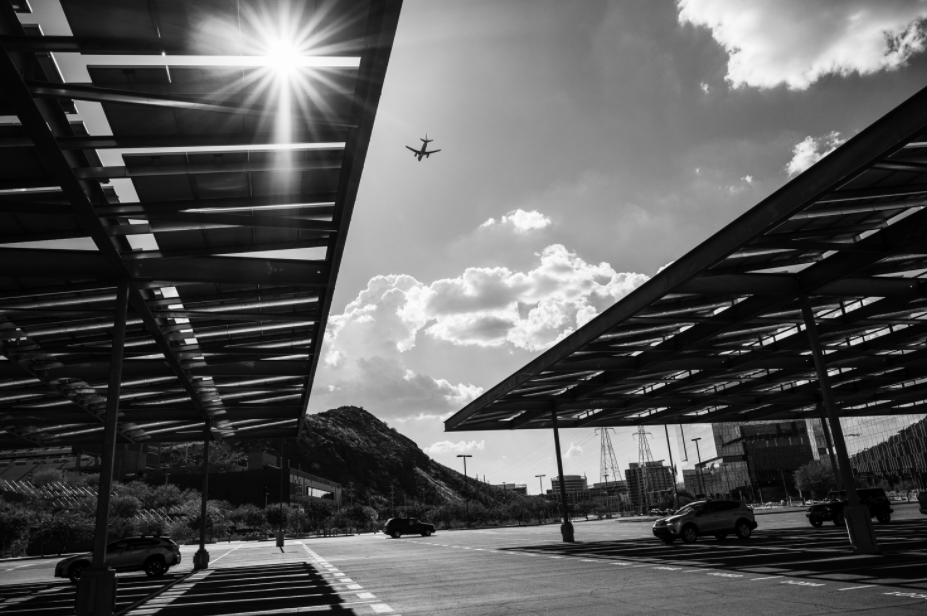
High Country News (September 2020): Extreme heat is here, and it’s deadly
In many ways, the climate future is already here. It will require an expansion of our imagination, and perhaps a serious look at the past, to figure out what to do next. And as in all good science fiction stories, in the race for climate resiliency, a robot is leading the way.
In many ways, MaRTy feels like something from a science fiction future, a robot humans can use to find the path of least heat resistance. Yet he is real enough, built in 2016 by Ariane Middel, an urban climate scientist from a small town in the lush German countryside, who is a professor at ASU. Middel made MaRTy from a series of meteorological sensors that record the MRT, humidity, and the air and surface temperatures.
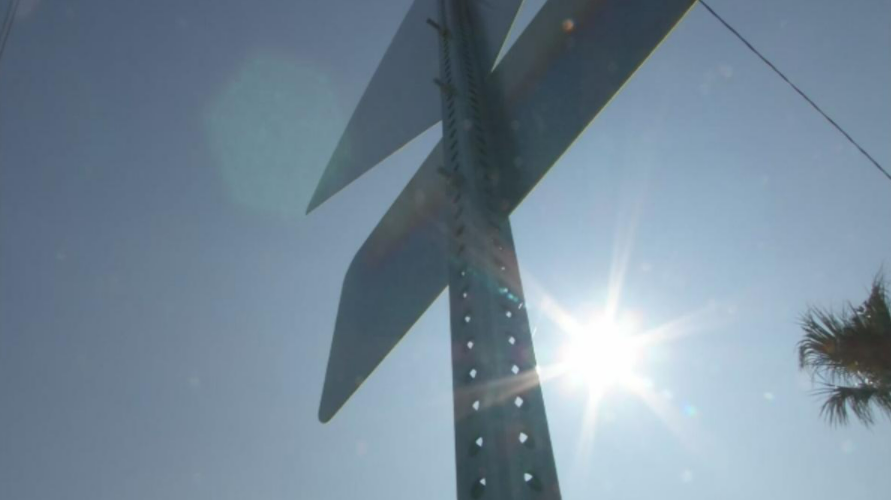
AZ Family (September 2020): Researchers detect 160-degree radiant temperature at Phoenix homeless encampment
The situation at the downtown homeless encampment is an extreme example of how a lack of shade can impact an area's temperature, though shade in Phoenix is often linked to a neighborhood's wealth.
Middel notes that tree planting and shade construction will take on increased significance as climate change brings even hotter summers to Phoenix.
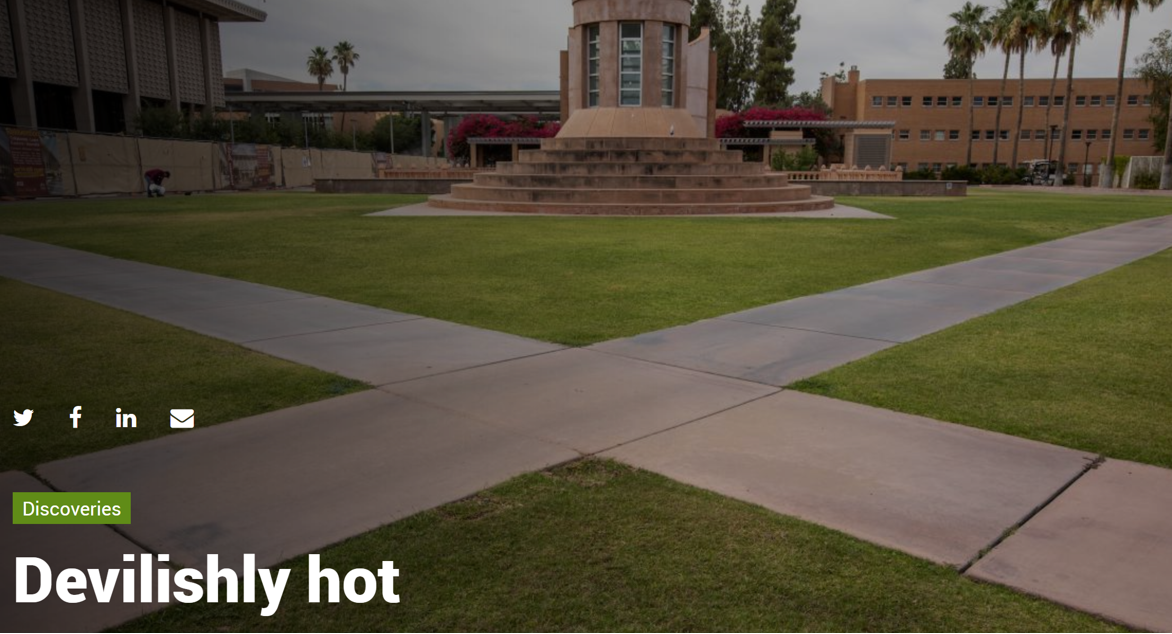
ASU Now, AZ Big Media (August 2020): Devilishly Hot | The hottest — and coolest — spots on ASU campus
You're a freshly-minted Sun Devil! Congratulations! But you've moved here from the Midwest or the Northwest or some other similarly cool and verdant place. The Arizona heat is, frankly, startling.
We have two pieces of good news for you as you start classes in August in Arizona. One: It's not always this beastly. Two: This is a guide to campus spots to avoid and to seek out when the heat is on.
Luckily, ASU has a scientist who studies urban heat…
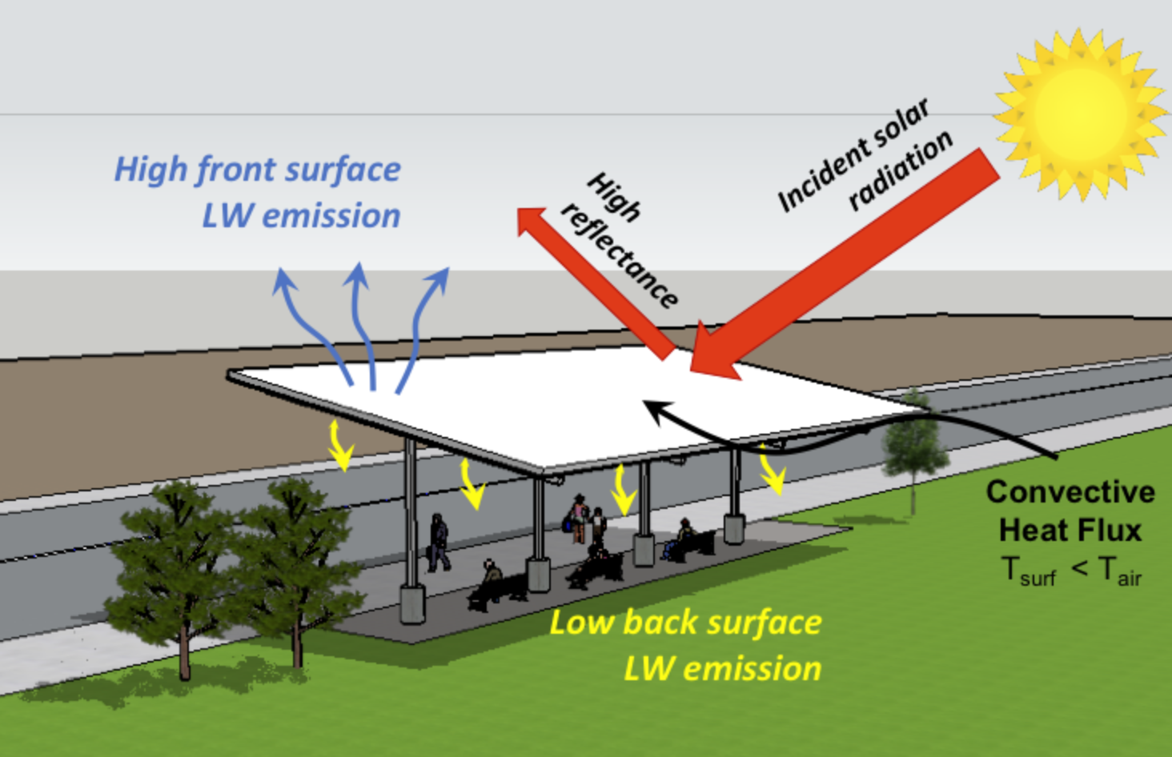
ASU Now (August 2020): ASU and Zimin Foundation Partner for Future of Urban Tech (Developing Urban Cooling Strategies for a Hot Metropolis)
Cities generate the vibrant energy of society. However, they’re also the center of some of our most pressing sustainability issues — air and water pollution, urban heat islands, disease or security threats, and an increasing demand for resources.
Professor David J. Sailor and Assistant Professor Ariane Middel are testing an urban cooling surface technology applied on bus stop shelters. They also plan to track heat variations across Phoenix with a sensor network integrated into mass transit infrastructure. Zimin Institute backing for this project will help the research team generate proof-of-concept data from living laboratories.
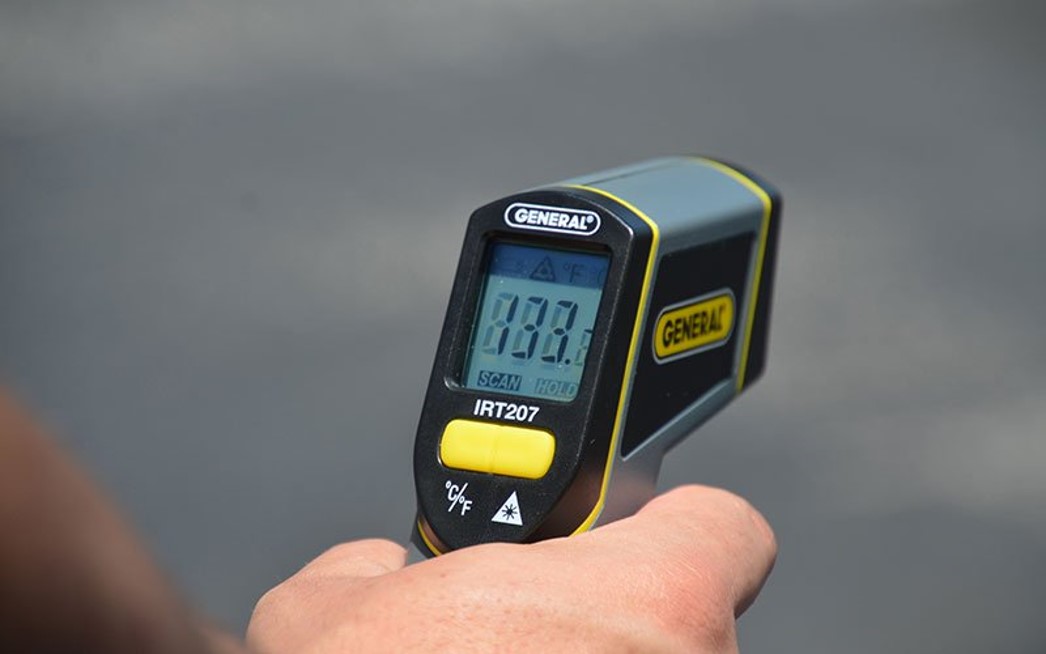
Cronkite News (July 2020): Efforts to cool Phoenix include pale pavement coating to reflect sunlight
An atypical coating was applied to a parking lot at Esteban Park in southeast Phoenix last month, topping gray, cracked asphalt with a smooth, off-white sealant.
The fresh look is more than a makeover: When the parking lot was coated June 12, it marked the start of Phoenix’s $3.3 million Cool Pavement Pilot Program, meant to mitigate sweltering summer night temperatures and make life at street level more bearable.
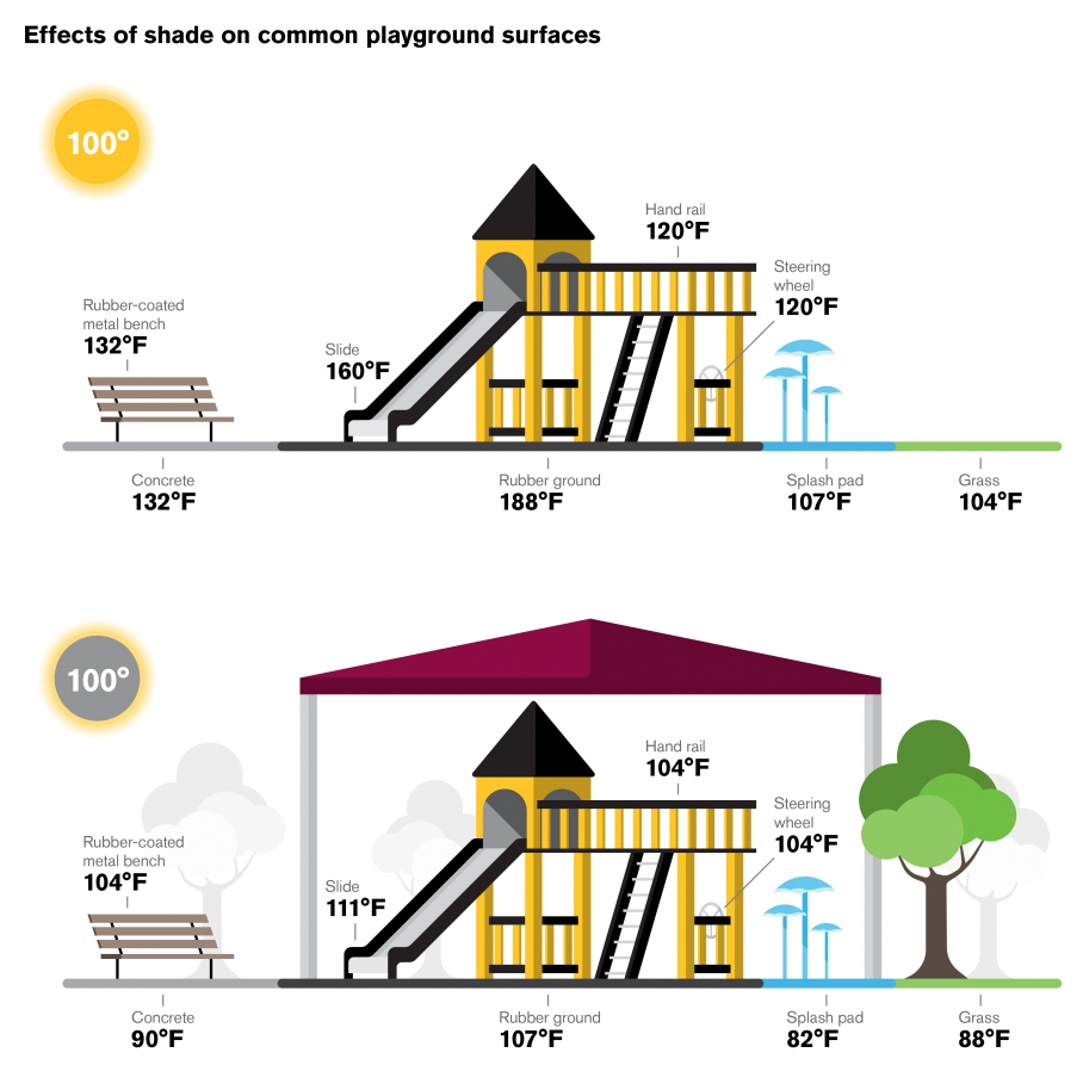
ASU Now (June 2020): Keeping kids cool on the playground
A day at the playground can be tempting on a bright sunny day, but in the Arizona heat, it can also be dangerous.
Children playing outside during Arizona summers can face 100 days or more of temperatures north of 100°F. Too often playgrounds use heat-retaining, unnatural surfaces in the middle of parks with no shade, especially in Phoenix. These unshaded playgrounds can act as mini heat islands, which can dis-incentivize physically active play or even lead to burns.
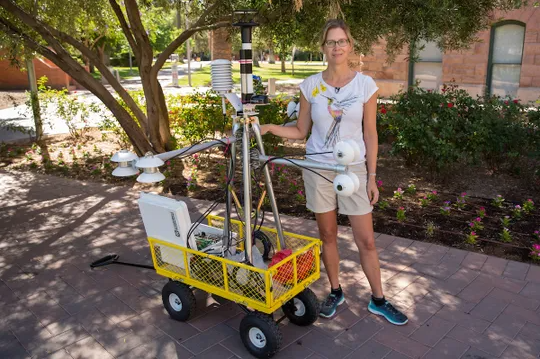
Arizona Republic (May 2020): 'Cool pavement' experiments help urban planners find ways to ease rising temperatures
Arizona State University climate scientist Ariane Middel walked the empty streets of a suburban neighborhood in Los Angeles last July. She had an unusual companion in tow: an elaborate heat sensor mounted to a garden cart.
Most people try to avoid the midday heat, but Middel and Kelly Turner, an urban planning researcher from UCLA, were gathering data on how so-called “cool pavement” might influence the way pedestrians experience heat in their neighborhoods.
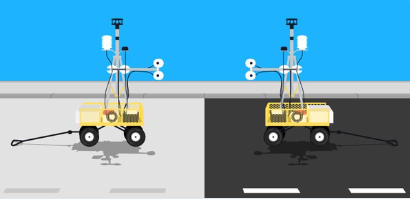
ASU Now (May 2020): Street smarts required in heat mitigation
One day last July, Ariane Middel and two other Arizona State University researchers headed west on Interstate 10. Squeezed inside their van were MaRTy 1 and MaRTy 2, mobile biometeorological instrument platforms that can tell you exactly what you feel in the summer heat. All five were destined for Los Angeles.
The researchers and their colleagues were headed to L.A. to start investigating how solar reflective coatings on select city streets affected radiant heat and, in turn, pedestrians’ comfort on a typical summer day.
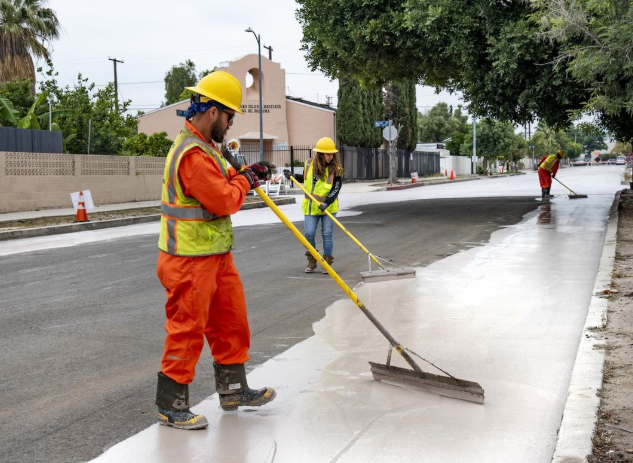
UCLA (May 2020): On-the-ground guidance for L.A.’s far-reaching climate strategy
Los Angeles’ ambitious plan to cool the city as the planet grows warmer is getting a boost from two university professors and a street-smart robot named MaRTy.
The researchers from UCLA and Arizona State University have completed the first on-site evaluation of the city’s Cool Streets program, one of several sustainability strategies outlined in Los Angeles’ 2019 Green New Deal.
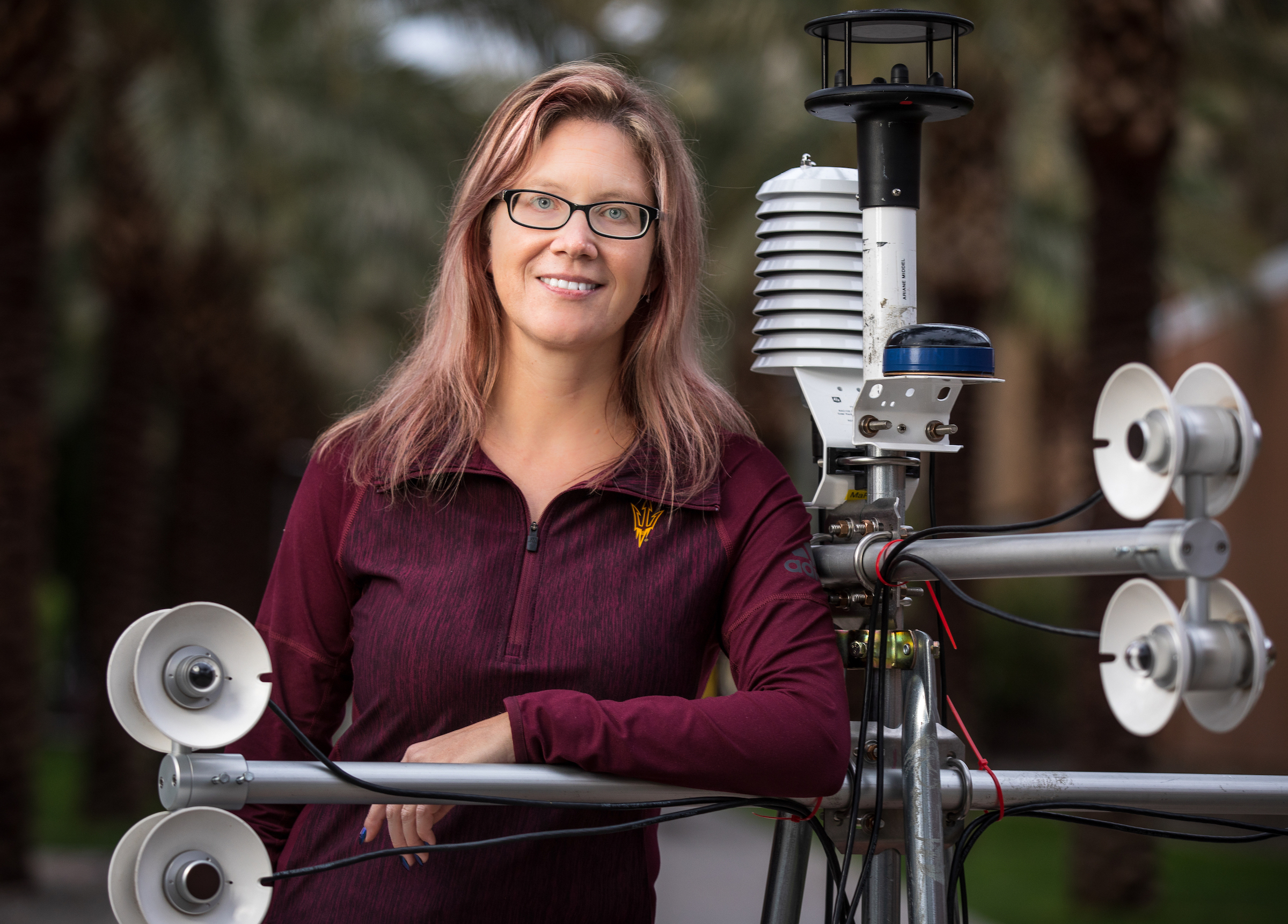
ASU Now (April 2020): Tracking a Silent Killer
Ariane Middel is from a small village in western Germany where the weather is generally cold and rainy. When she moved to Phoenix in 2009 to do her postdoc at Arizona State University, her original focus was on water modeling research.
“Most things you’d do to increase people’s comfort in the desert involve water,” Middel said. “Water is tightly connected with temperature and people’s comfort.”
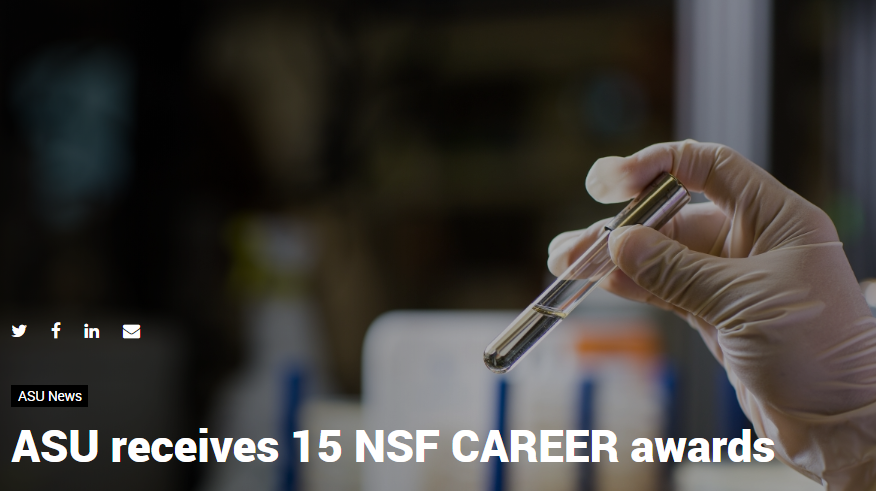
ASU Now (March 2020): ASU receives 15 NSF CAREER awards
Arizona State University has to date earned 15 National Science Foundation early faculty career awards for 2020. The awards total $9.5 million in funding for ASU researchers over five years.
The NSF’s Faculty Early Career Development (CAREER) Program identifies the nation’s most promising young faculty members and provides them with funding to pursue outstanding research, excellence in teaching and the integration of education and research. Often, these awards spur the creativity of the faculty member and helps set them on an innovative career path.
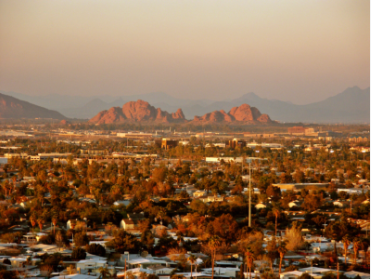
CAP LTER Network (March 2020): Thinking about long-term futures to make better decisions today
Anticipating the needs of cities in the future is a key aspect of urban sustainability. One approach to planning for sustainable cities is for researchers and practitioners to work together to develop scenarios that benefit communities as well as ecosystems. Central Arizona Phoenix LTER (CAP LTER) is taking an innovative approach to urban research by co-producing sustainable future scenarios (SFS) with Phoenix city planners, decision-makers, and community leaders as a tool for long-term urban sustainability. In addition to ASU researchers, the effort involved a total of 17 participating institutions, including governmental and non-governmental organizations.
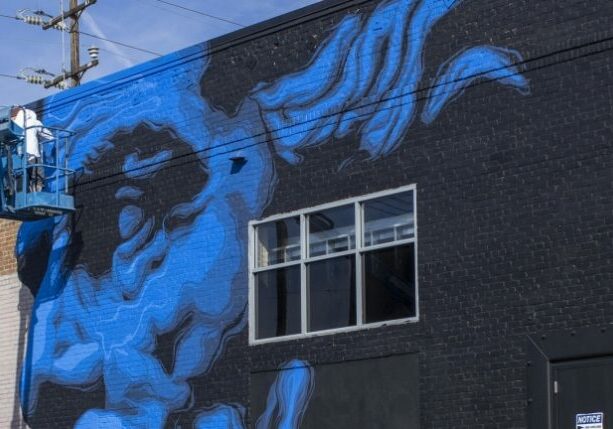
UCLA Luskin School of Public Affairs (October 2019): Street Art Meets Climate Science in the Big, Blue Face of Zeus
The gigantic mural at the corner of Avalon and 62nd in South L.A. is super cool. The face of the Greek god Zeus painted in electric blues against a black background looks down as people walk by on the sidewalk and cars pass on the street. At 72 feet wide and 27 feet high, the street art makes a big, bold statement in a neighborhood of warehouses and loading docks

CityLab (October 2019): The Problem With ‘Cool Pavements’: They Make People Hot
About two months ago, Ariane Middel walked the empty streets of Sun Valley, a suburban neighborhood in Los Angeles’ San Fernando Valley. The roads there had recently been coated with an asphalt mixture called CoolSeal, which lowers air temperatures by reflecting the energy from sunlight, rather than storing it and converting it into heat.
For hours, Middel and a team of researchers dragged an elaborate heat sensor, mounted to a garden cart, down the streets and sidewalks to grab meteorological data.
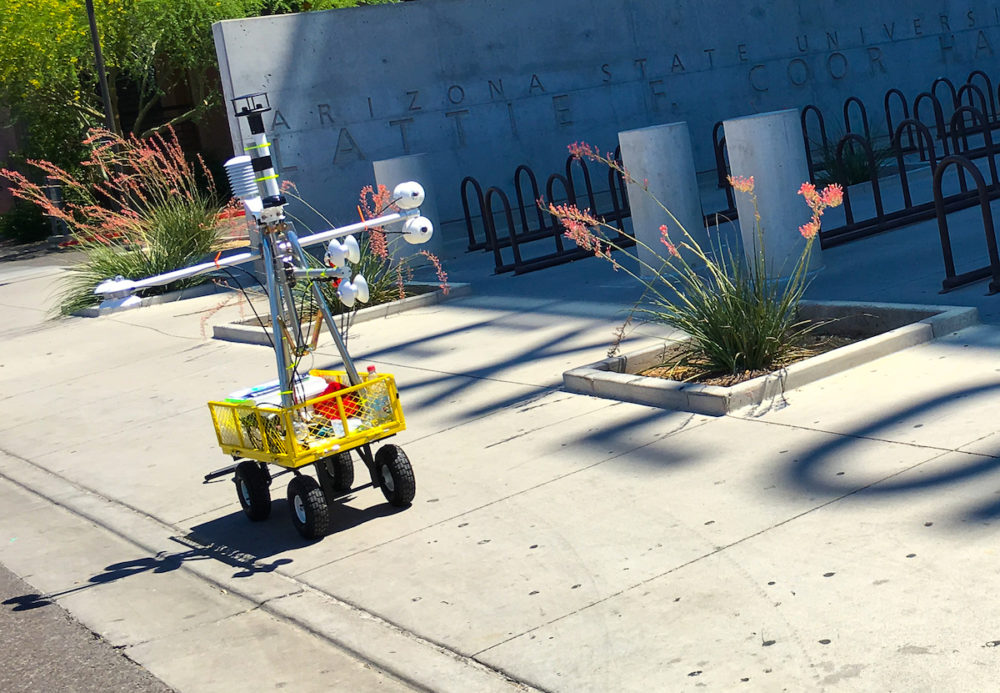
University of Guelph News (September 2019): Keeping Pedestrians Cool Focus of First-Ever U of G Research
Cities are likely to get hotter under global warming.
But by countering the intense radiant heat given off by sidewalks, buildings and other infrastructure, urban landscaping and construction can make pedestrian spaces feel 10 degrees Celsius cooler or more, said a University of Guelph atmospheric scientist and co-author of a pioneering study.
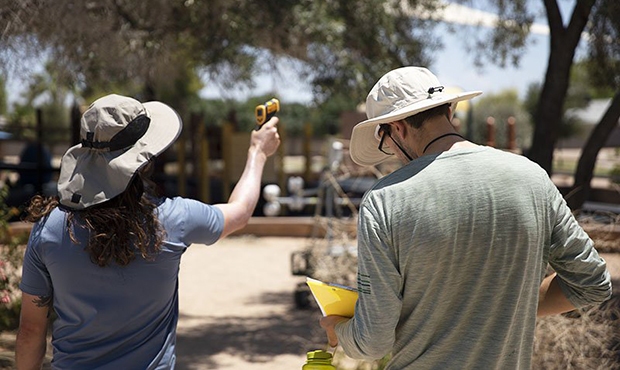
KTAR (September 2019): ASU researchers say shade is not all created equal
A cart clattered down one of the many concrete walkways in Kiwanis Park in early July, laden with scientific equipment. Its name is MaRTy, and the information it gathers has the potential to change the way policymakers think about, understand and plan for extreme heat.
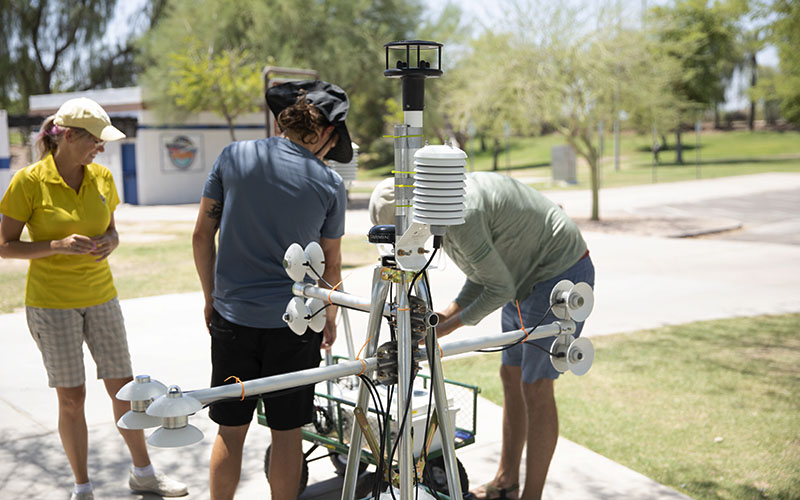
Cronkite News (August 2019): 50 grades of shade: Researchers find that it’s not all created equal
If you ask Ariane Middel, assistant professor with Arizona State University’s School of Arts, Media and Engineering, she’ll tell you MaRTy is “a biometeorological mobile instrument platform.” It’s really a hand cart with thousands of dollars in scientific equipment used to measure and record different aspects of temperature. The instruments are mounted on a cross-shaped structure, and the whole rolling assembly stands about 4 feet tall.
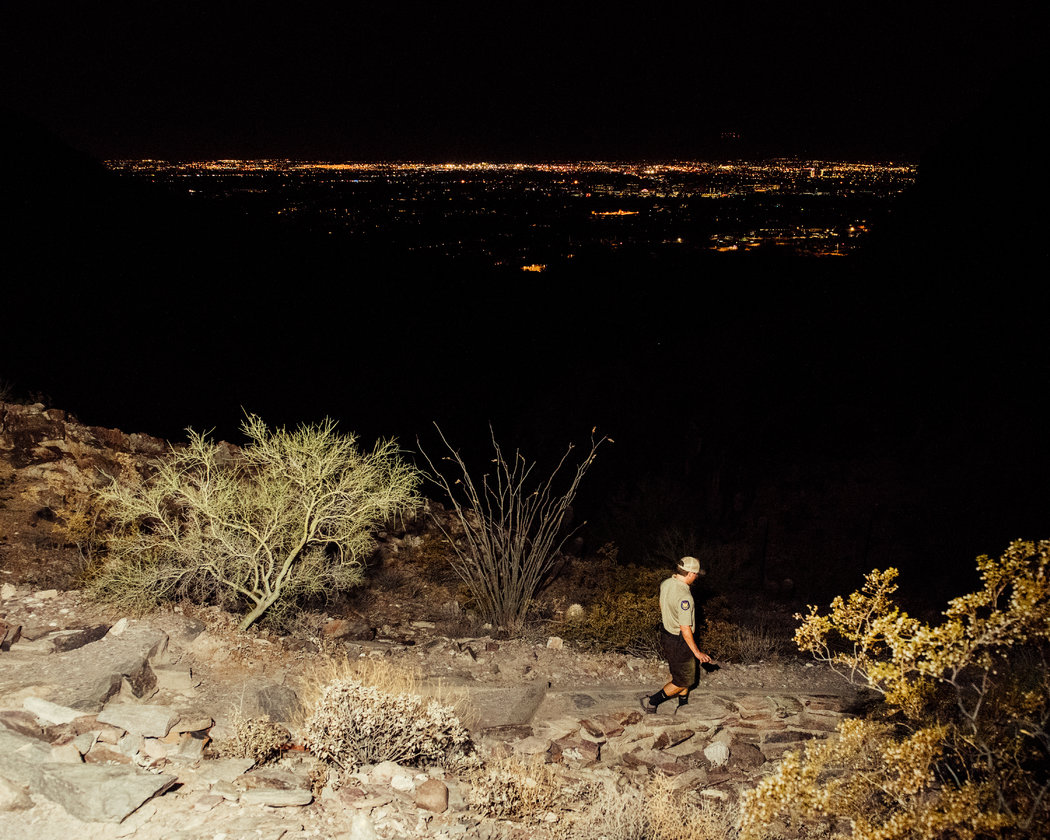
New York Times (August 2019): As Phoenix Heats Up, the Night Comes Alive
“You definitely feel the heat, but the nights are better,” Mr. Plautz said. “A lot of people hike right now instead of during the day because it is a lot cooler.”
Phoenix, which had 128 days at or above 100 degrees Fahrenheit last year, is one of the hottest and fastest-warming cities in the United States.
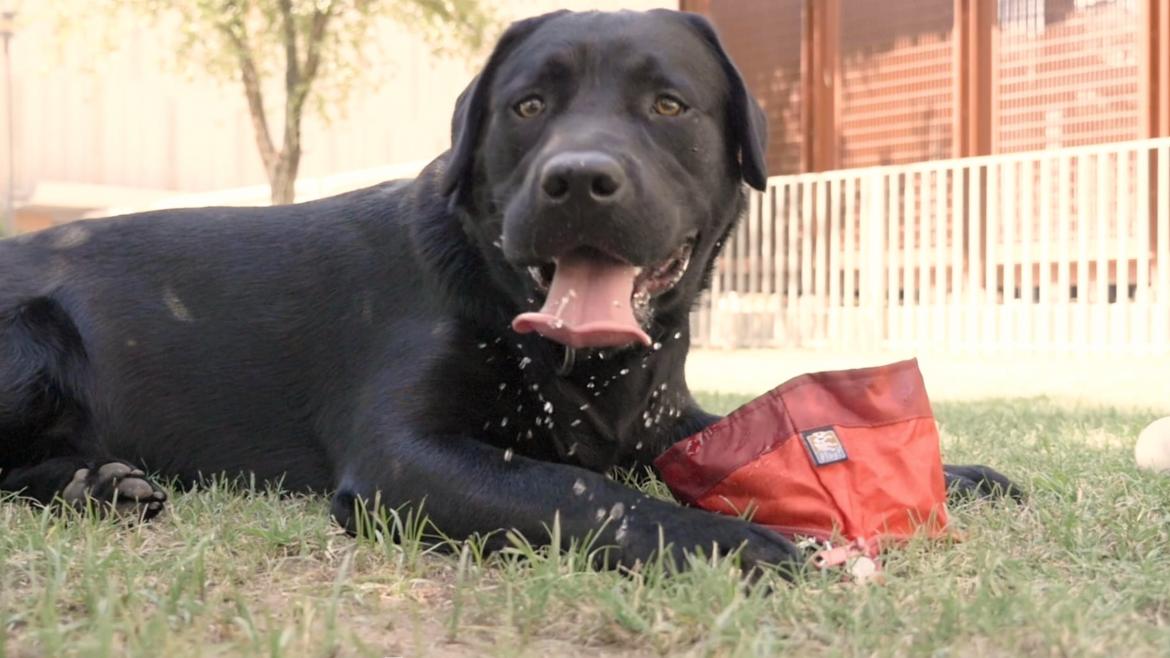
ASU Now (August 2019): Tips to brave the dog days of summer
Urban climatologists Ariane Middel and Scott Krayenhoff did a three-year study of the Tempe campus, mapping out the three coolest (and hottest) spots.
Other ASU researchers also are working on heat-related issues, including David Hondula, who is working with the city of Phoenix to develop a first-of-its-kind heat readiness plan that will guide how the city identifies, tracks, prepares for and responds to the dangers of extreme urban heat.
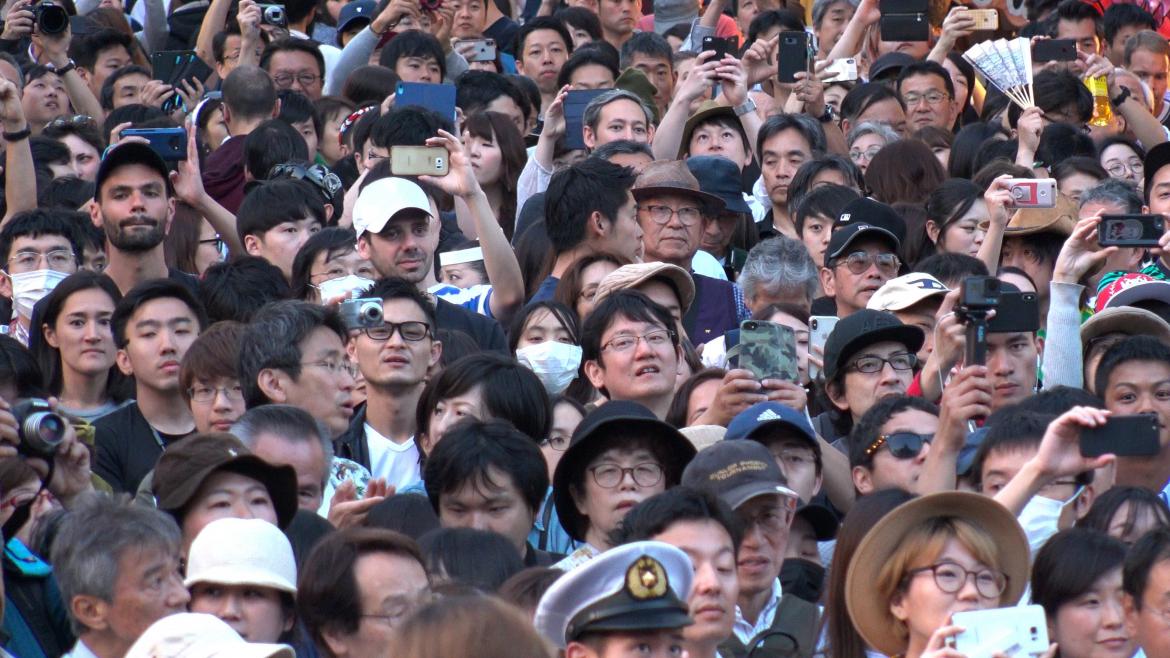
ASU Now (July 2019): Keeping Olympic marathon spectators cool
Standing for hours within crowds of people in hot, sunny and humid conditions is a recipe for heat-related illness — but that’s what spectators at the Tokyo Summer Olympics marathons may be dealing with on Aug. 2 and 9, 2020.
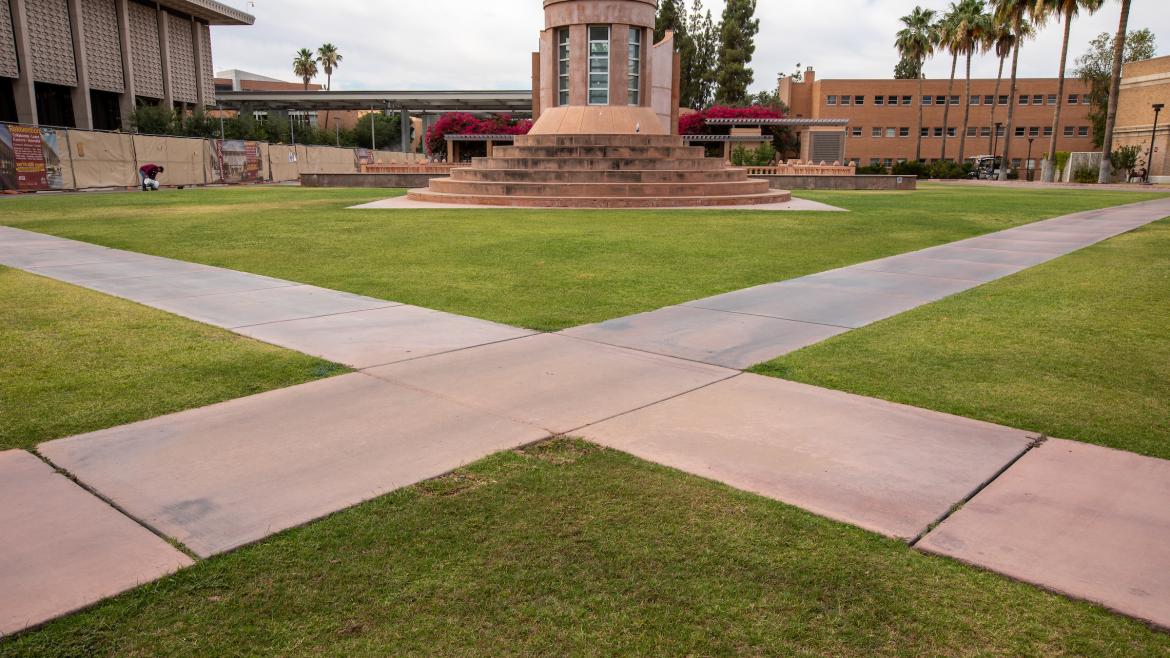
ASU Now (June 2019): The Hottest and Coolest Spots on Campus
Just in time for face-melting season, a study of shade, heat and the best ways to cool pedestrians is being published by two Arizona State University scientists.
Urban climatologists Ariane Middel and Scott Krayenhoff did a three-year study of the Tempe campus, mapping out the three coolest (and hottest) spots on campus, taking readings even during excessive heat and record temperatures and discovering what works best to stay cool.
ASU Now (May 2019): Summer in the City
The unseasonably temperate weather in the Phoenix metropolitan area this spring may have everyone scratching their heads, but rest assured, heat will always be a concern in the Valley whose name pays homage to the most omnipresent force there – the sun.
ABC15 (May 2019): ASU creates new technology to research how heat impacts our bodies
Comfort is hard to come by in Arizona's triple digit days.
But, Arizona State University has MaRTy to help.
"I know that this knowledge that I'm producing is actually being used to make it more comfortable here in the desert for people," Assistant Professor at Arizona State University Ariane Middel said.
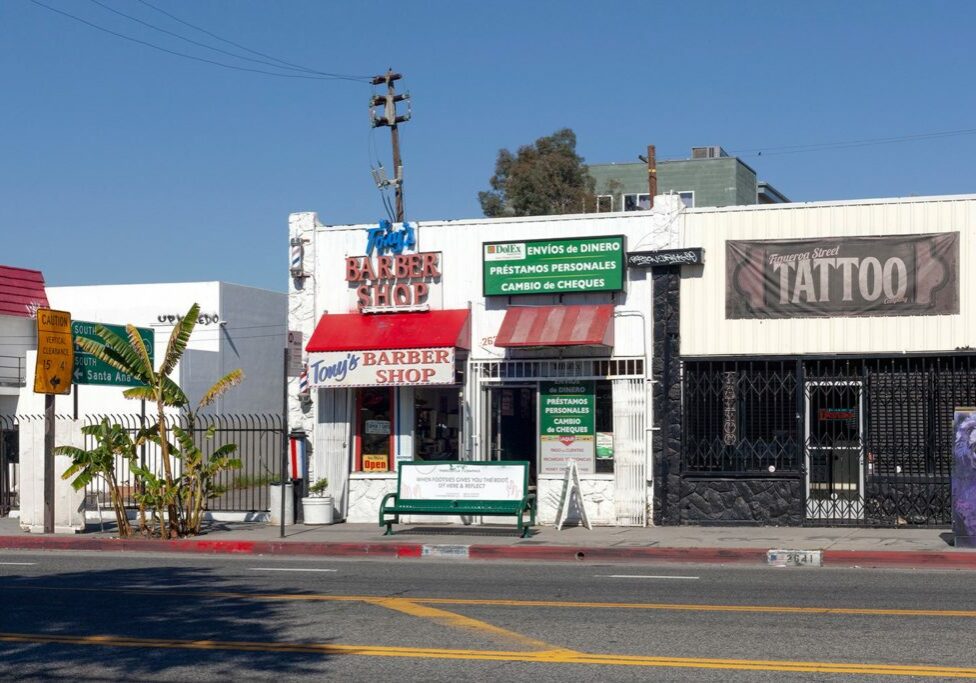
Places (April 2019): Shade (by Sam Bloch)
As the sun rises in Los Angeles, a handful of passengers wait for a downtown bus in front of Tony’s Barber Shop, on an exposed stretch of Figueroa Street near the Pasadena Freeway. Like Matryoshka dolls, they stand one behind another, still and quiet, in the shadow cast by the person at the head of the line. It’s going to be another 80-degree day, and riders across the city are lining up behind street signs and telephone poles.
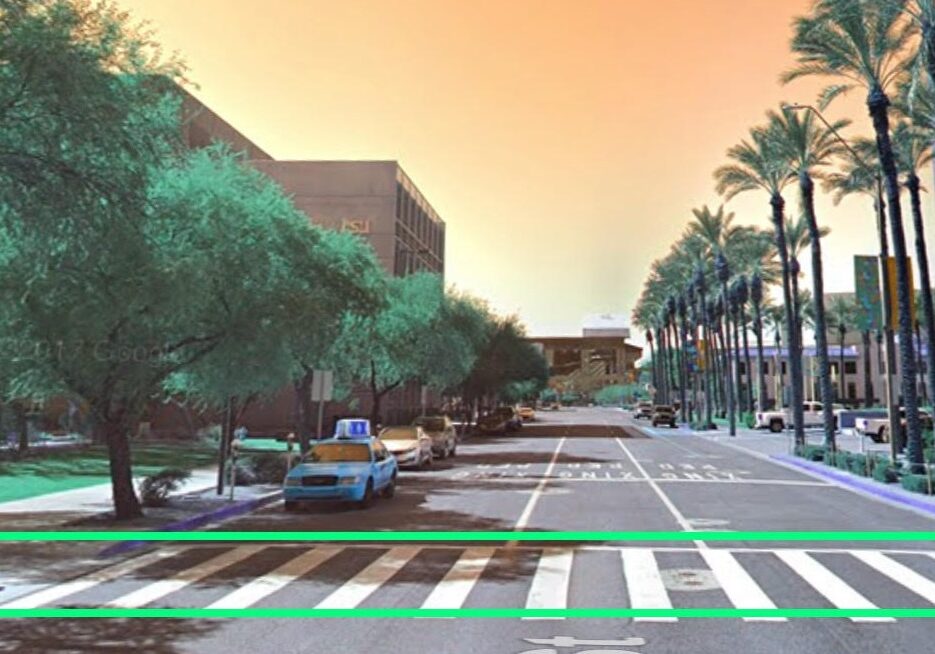
ASU Now (October 2018): ASU researchers develop tool to help determine a neighborhood's walkability
You know you need to get more exercise. You want to be healthier. More physically fit. Mentally sharper. You know that regular physical activity can provide you with all these benefits, but so much gets in the way: lack of time, lack of motivation, your sedentary job, your neighborhood.
Wait. Your neighborhood?
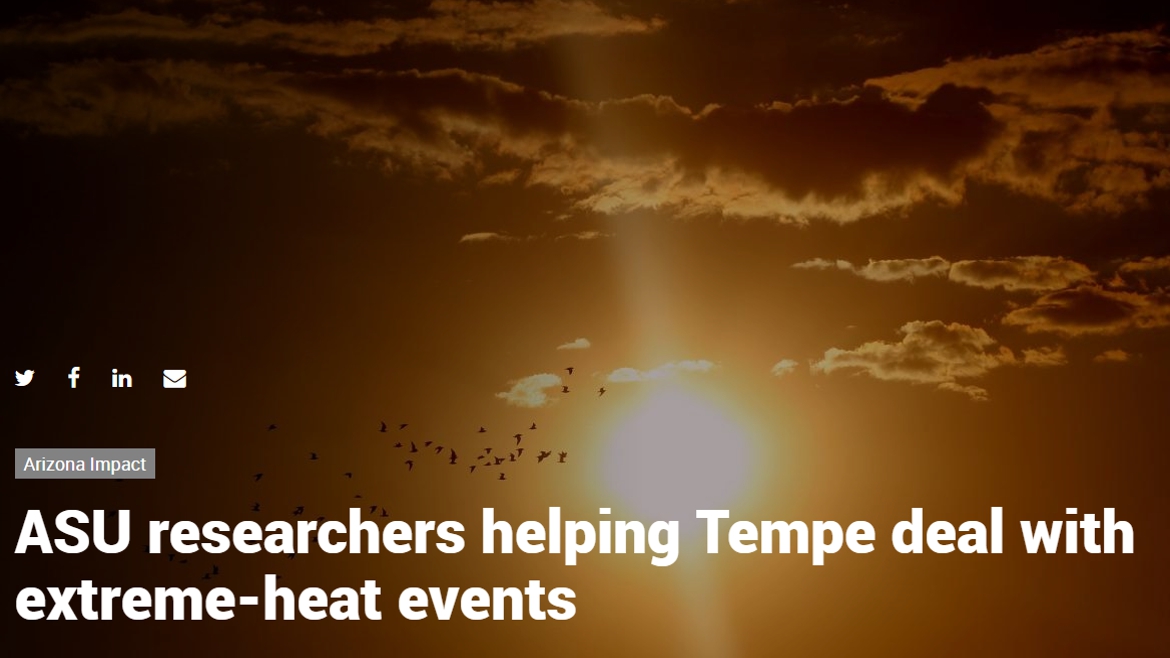
ASU Now (July 2018): ASU researchers helping Tempe deal with extreme-heat events
That kind of extreme heat is a dangerous annual stress on city resources. Last year, the Tempe Fire Department responded to 141 calls for heat-related emergencies. There have been 84 heat-emergency calls so far this year.
So, Arizona State University researchers are working with the city of Tempe on ways to mitigate the effects on the people who live here. A team
from the Urban Climate Research Center has several projects happening now, which the city discussed in a press conference on Wednesday.
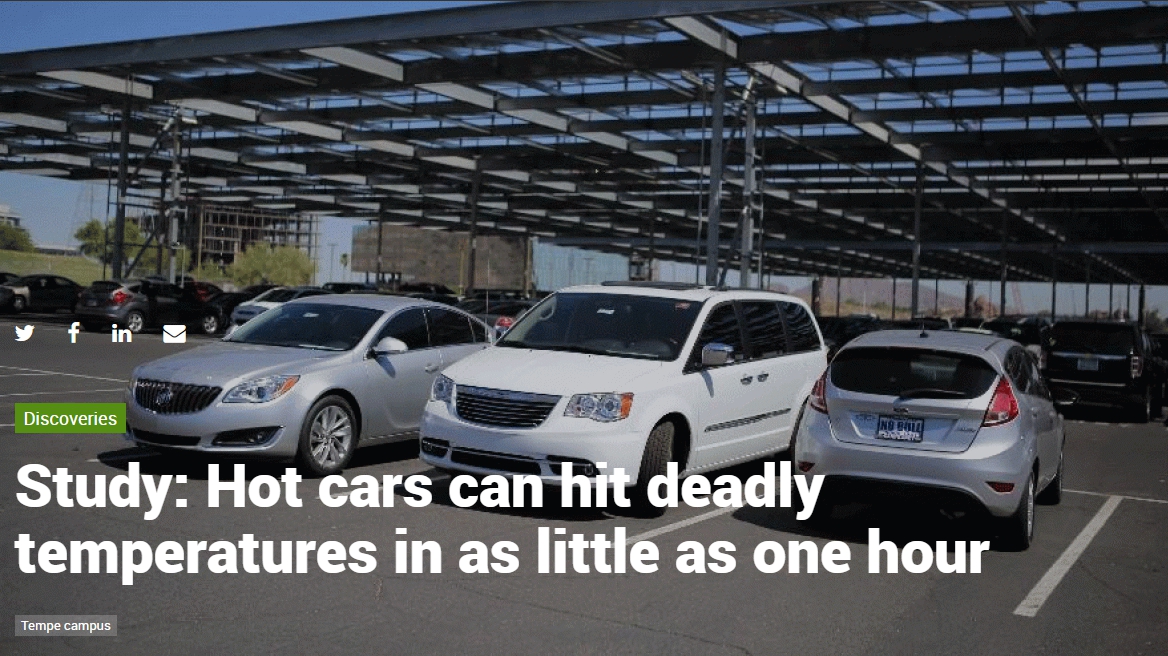
ASU Now (May 2018): New research from ASU and UC San Diego measured air and surface temperatures of cars parked in sun and shade
A lot can happen at 160 degrees Fahrenheit: Eggs fry, salmonella bacteria dies, and human skin will suffer third-degree burns. If a car is parked in the sun on a hot summer day, its dashboard can hit about 160 degrees in about an hour. One hour is also about how long it can take for a young child trapped in a car to suffer heat injury or even die from hyperthermia.
Researchers from Arizona State University and the University of California at San Diego School of Medicine have completed a study to compare how different types of cars warm up on hot days when exposed to different amounts of shade and sunlight for different periods of time.
UC San Diego Health (May 2018): Hot Cars Can Hit Life-Threatening Levels in Approximately One Hour
Six children have died from being left in hot cars in the United States so far this year, according to the web site noheatstroke.org , a program supported by the National Safety Council. That number will rise with looming summer temperatures. On average, 37 children in the U.S. die each year due to complications of hyperthermia — when the body warms to above 104 degrees Fahrenheit and cannot cool down — after being trapped in overheated, parked cars.
NBC News (May 2018): Hot cars and kids: Study shows killer temps hit in an hour
It was one of those more-than-hectic days. Erin Holley and her husband were building a new house and dealing with a newborn along with their 4-year-old daughter.
“The baby and the move came all at the same time,” said Holley, who lives in Charleston, S.C.
“Last summer is a blur of storage units and moving into the new house and nursing the baby.” He didn’t sleep well. “I was exhausted and delirious,” she said.
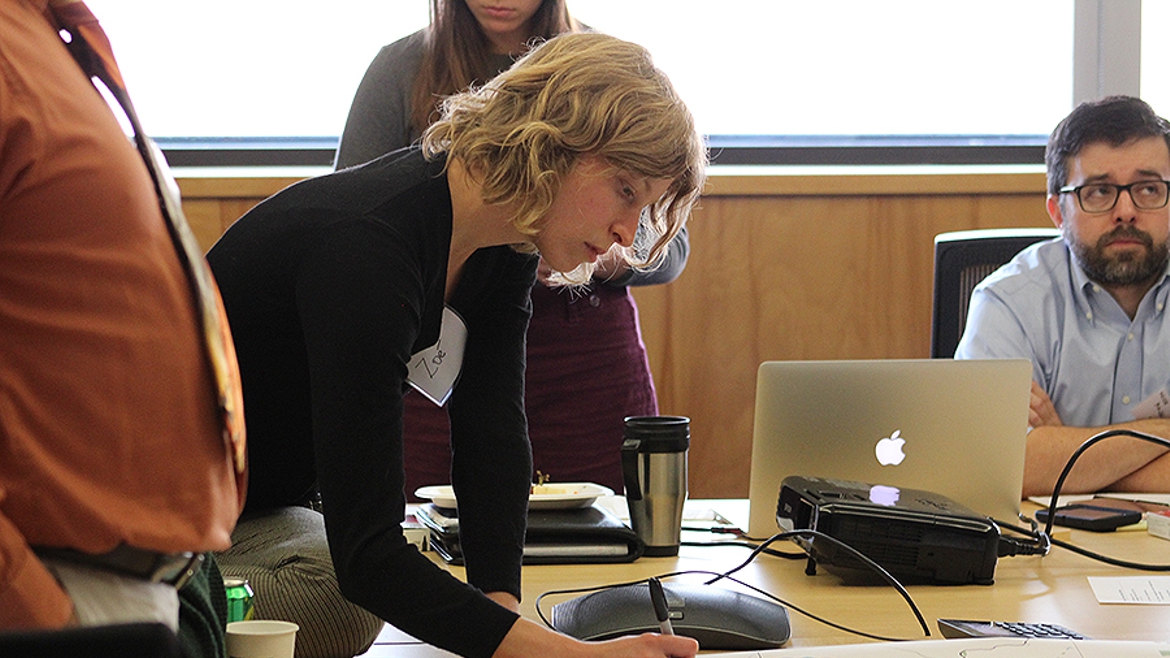
University of Buffalo News (December 2017): Climate change and the tale of two cities
A scorching heat wave in the Phoenix area killed more than 100 people in the summer of 2016 as temperatures soared to near 120 degrees.
Over three days in November 2014, a massive snowstorm — dubbed “Snowvember” — dumped more than 7 feet of snow across parts of Western New York, causing 13 deaths.
AZ Central (October 2017): This park in hot south Phoenix neighborhood is getting more trees
Phoenix Parks and Recreation will plant five new trees at Sherman Parkway, a park in a south Phoenix neighborhood where the lack of landscaping has fueled the urban heat-island effect.
A parks department representative announced the plan at a neighborhood association meeting on Oct. 19, according to the association's president, Emma Cordova.
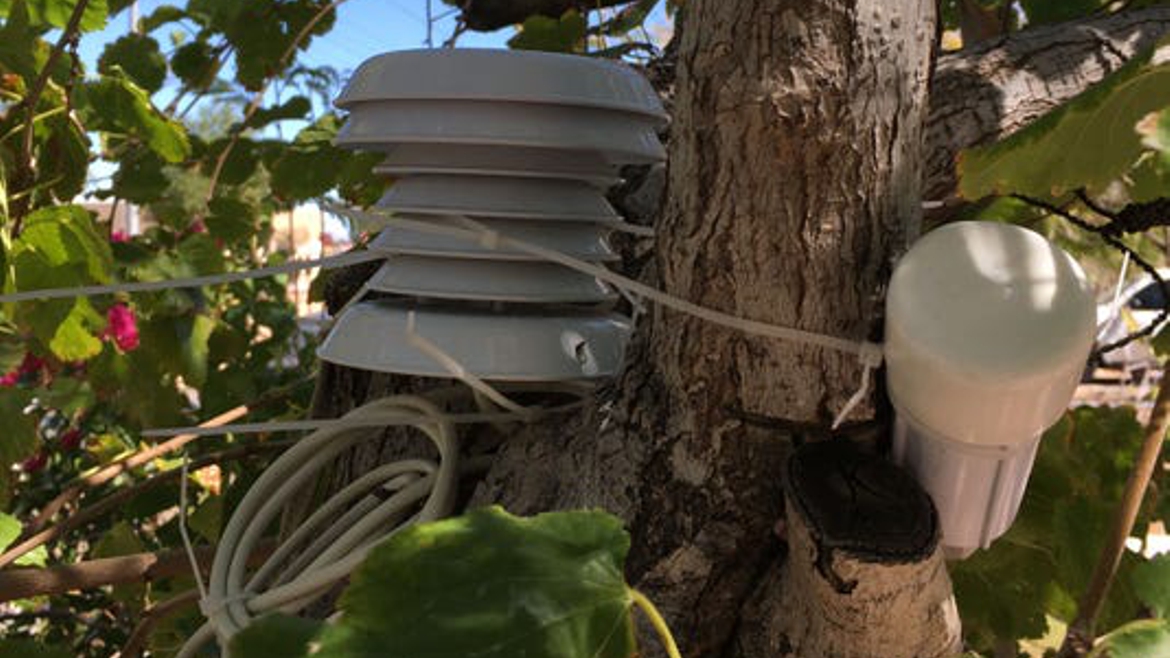
AZ Central (October 2017): How we measured heat in different parts of Maricopa County
The Arizona Republic used outdoor and indoor sensors to compare heat in different homes, including one man's pickup truck, and neighborhoods within Maricopa County.
Arizona State University’s School of Geographical Sciences and Urban Planning programmed the sensors and lent them to The Republic.
Sustainability scientists David Hondula and Ariane Middel of ASU and Temple University, respectively, advised The Republic on how to gather comparable results from the sensors.
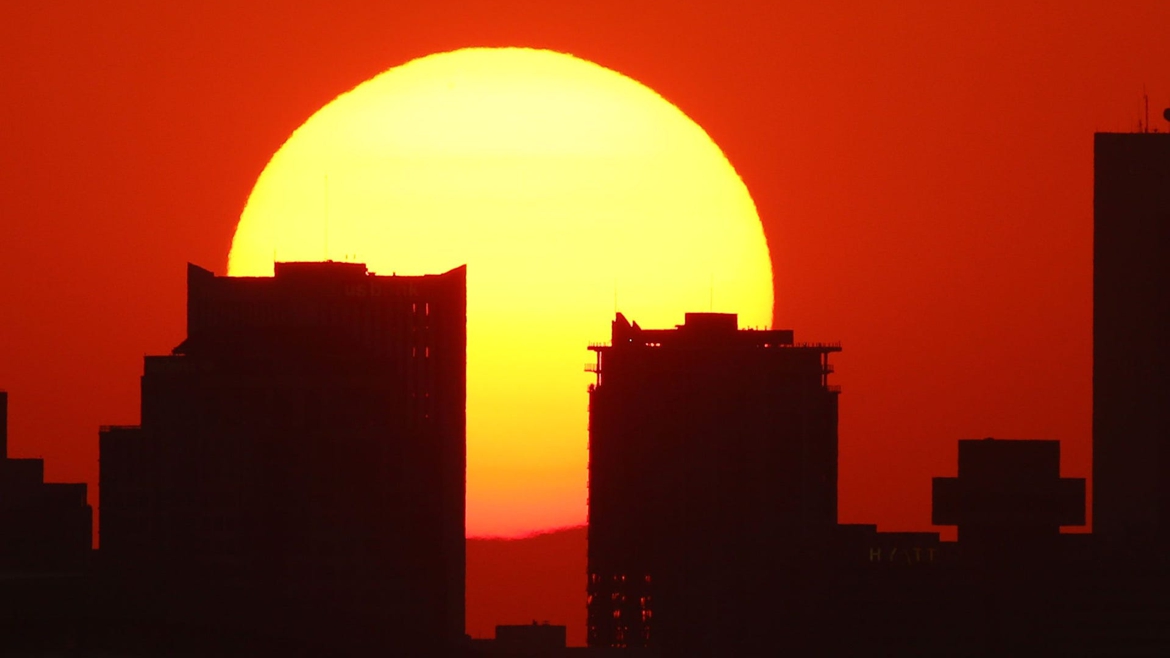
AZ Central (October 2017): Here's how heat discriminates, and what Phoenix is doing to help those at risk
Daniel Runyan's towel draped across the bench seat of his blue 1997 Chevrolet pickup. A change of dress clothes hung behind the seat. Instrumental music played over the radio.
At 6 p.m., the temperature in his truck, parked in the speckled shade of a mesquite and its door wide open, was over 110 degrees. He opened a cooler in the truck bed and grabbed a bottle of water from the melting ice.
Runyan lives in his truck. He’s 67 and has cancer. His doctors told him it's terminal.
EHP Science Selection (September 2017): From Ambient to Personal Temperature: Capturing the Experience of Heat Exposure
Heat exposure can have a wide range of adverse effects on the human body. But when researchers set out to measure the precise size of those effects across populations, they typically are forced to rely on imprecise exposure data. The authors of a new commentary in EHP outline an alternative approach to better assess how individuals experience heat.
Most studies on heat health rely on ambient temperature readings from airports and other fixed weather stations. These data cannot capture social and behavioral factors that influence heat exposure on a finer scale, nor do they reflect temperatures indoors, where many of us spend our time. Thus, they do not reflect what most individuals experience in their daily lives
Alliance for Community Trees News (July 2017): Mobile Weather Station Maps Most Comfortable Route
Tempe, AZ (May 30, 2017) – In an Arizona summer, the best parking spot is not the one by the door. It’s the one a quarter-mile away under a tree. Ariane Middel, Arizona State University urban climatologist and hunter of shadows, knows this and has created a method to show us a cool way through the shade.
Middel, an assistant research professor in the School of Geographical Sciences and Urban Planning and a faculty affiliate of the Urban Climate Research Center, has developed a tool that will someday show pedestrians the shadiest — and hence coolest — route to their destinations. It also will tell planners and architects where they should throw shade.
The Real News (July 2017): Is Extreme Heat the New Normal?
Heat exposure can have a wide range of adverse effects on the human body. But when researchers set out to measure the precise size of those effects across populations, they typically are forced to rely on imprecise exposure data. The authors of a new commentary in EHP outline an alternative approach to better assess how individuals experience heat.
Most studies on heat health rely on ambient temperature readings from airports and other fixed weather stations. These data cannot capture social and behavioral factors that influence heat exposure on a finer scale, nor do they reflect temperatures indoors, where many of us spend our time. Thus, they do not reflect what most individuals experience in their daily lives
Alliance for Community Trees News (July 2017): Mobile Weather Station Maps Most Comfortable Route
Tempe, AZ (May 30, 2017) – In an Arizona summer, the best parking spot is not the one by the door. It’s the one a quarter-mile away under a tree. Ariane Middel, Arizona State University urban climatologist and hunter of shadows, knows this and has created a method to show us a cool way through the shade.
Middel, an assistant research professor in the School of Geographical Sciences and Urban Planning and a faculty affiliate of the Urban Climate Research Center, has developed a tool that will someday show pedestrians the shadiest — and hence coolest — route to their destinations. It also will tell planners and architects where they should throw shade.
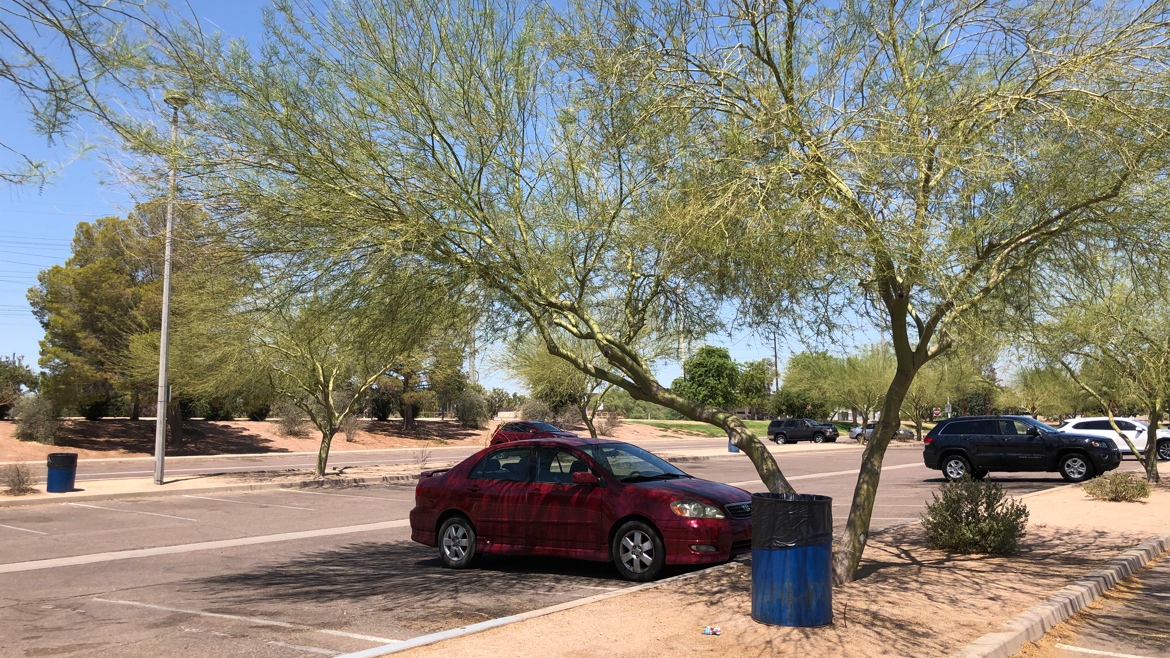
ABC 15 (June 2017): Shade or proximity: What's more important to you when parking?
Here in Arizona, we seem to think the best parking space is the one closest to the door — spend less time outside walking from the car, right?
Turns out, that may be the quickest, but it's definitely not always the coolest! In fact, according to one ASU professor, looking for trees is your best bet.
KTAR (June 2017): ASU researcher hopes shade-tracking tool will help pedestrians
Tempe, AZ (May 30, 2017) – In an Arizona summer, the best parking spot is not the one by the door. It’s the one a quarter-mile away under a tree. Ariane Middel, Arizona State University urban climatologist and hunter of shadows, knows this and has created a method to show us a cool way through the shade.
Middel, an assistant research professor in the School of Geographical Sciences and Urban Planning and a faculty affiliate of the Urban Climate Research Center, has developed a tool that will someday show pedestrians the shadiest — and hence coolest — route to their destinations. It also will tell planners and architects where they should throw shade.
AZ Central (June 2017): Arizona's heat is getting worse — and it's killing people
Arizona's infamous summer heat is a worsening menace.
Global warming and Phoenix's sun-soaked urban core make blistering heat waves like this week's increasingly dangerous, especially to the poor and elderly.
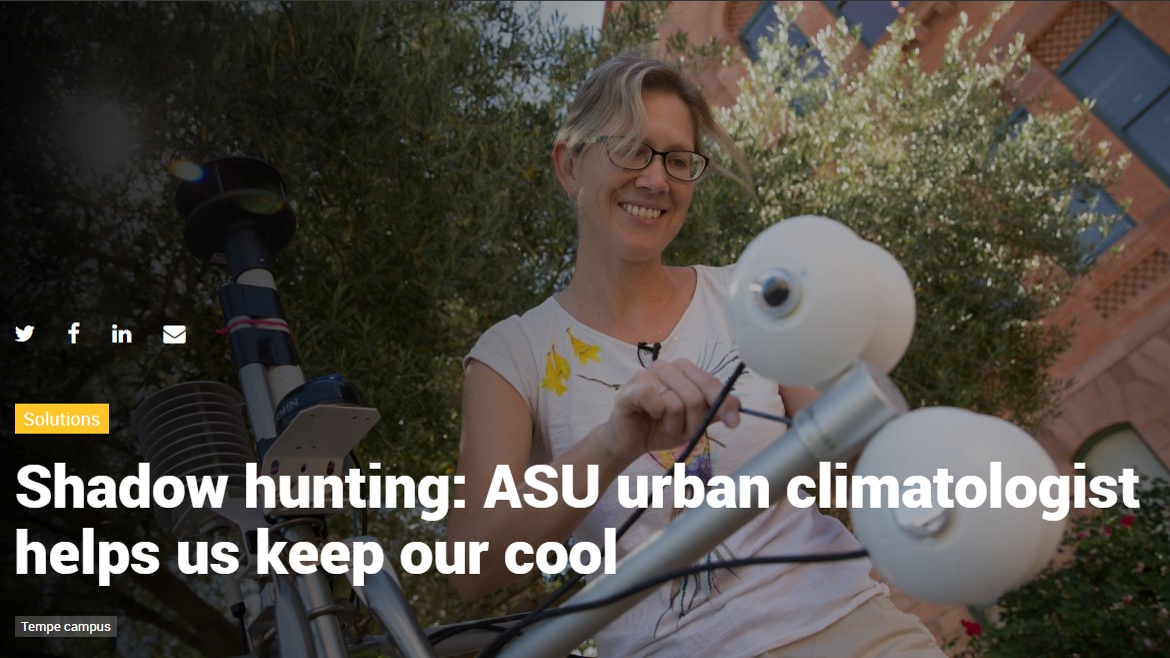
ASU News (June 2017): Shadow hunting: ASU urban climatologist helps us keep our cool
In an Arizona summer, the best parking spot is not the one by the door. It’s the one a quarter-mile away under a tree.
Ariane Middel, Arizona State University urban climatologist and hunter of shadows, knows this and has created a method to show us a cool way through the shade.
ASU News (September 2016): Staying cool: The science of shade
In sunny Arizona, shade is a precious element of the landscape. Pedestrians follow circuitous routes under trees, awnings and shade structures – rewarded by a more comfortable journey.
Recently-published work by four ASU researchers helps pinpoint how people respond to shade in the desert. They asked, “What’s key to feeling comfortable in the desert, and how does shade contribute?”
University of Kaiserslautern Unispectrum (September 2016): Vom
Klassenzimmer in der Pfalz in die Weiten Arizonas
Das Leben verläuft meist anders als geplant: Ganz besonders trifft diese Weisheit auf Kathrin Feige zu. Die junge Frau studierte Geografie und Germanistik auf Lehramt in Trier. Der Liebe wegen zog sie anschließend nach Kaiserslautern. Hier sollte sie nur kurz als Lehrerin an einer Schule arbeiten
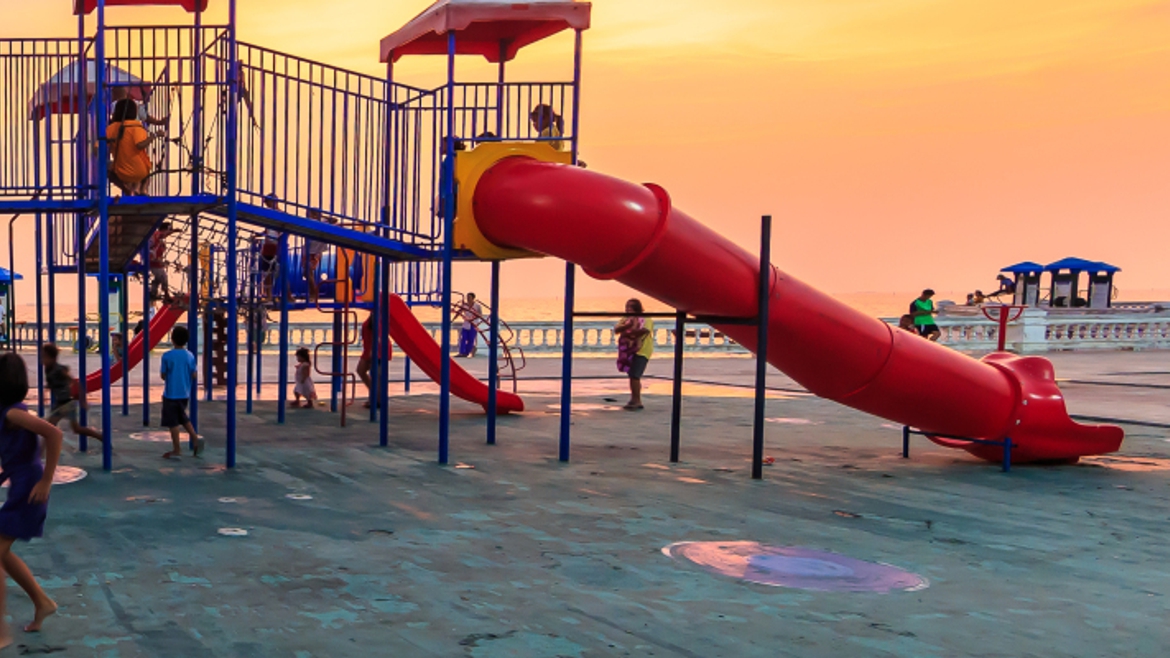
San Angelo Standard-Times (Texas) (July 2016): Cooling off playgrounds - A little shade will go a long way to protect children
In warmer climates, where 90- and 100-degree air temperatures are the norm for several months of the year, unshaded playground equipment can reach temperatures that cause burns to children. But a pilot study and paper published this past fall could be the first step toward improving safety at playgrounds throughout the country with a simple, obvious solution — providing a little shade.
The study is from Jennifer Vanos, an assistant professor in the atmospheric science group in the Department of Geosciences and a faculty associate with the Texas Tech Climate Science Center, and her colleagues at Arizona State University.
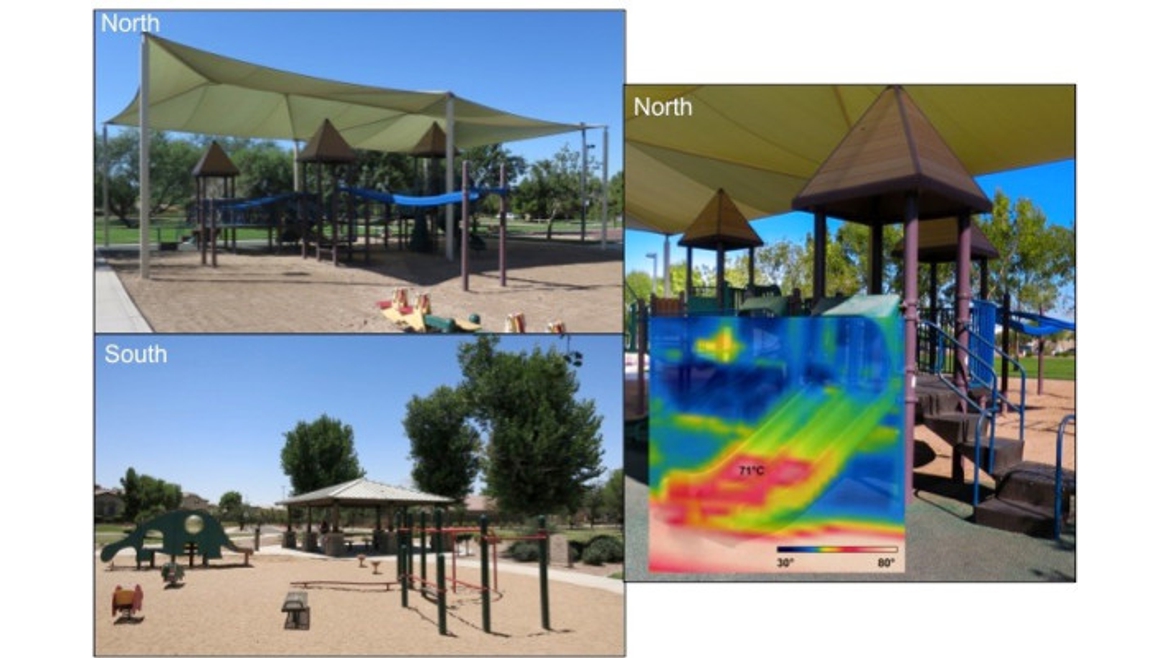
UGEC Viewpoints (March 2016): Transforming desert playgrounds into urban oases
When parents send their children off to school they expect them to spend their days in a safe and healthy environment. There’s plenty of evidence of how outdoor play promotes personal health and well-being, and access to a playground in an effectively designed space is a large component of being physically active.
But not all playgrounds are as safe as they might appear. With canopy coverage lower than many city averages, children might be exposed to increased levels of ultraviolet radiation (UVR) that can lead to erythema (sunburn) and an elevated risk of skin cancer. In addition, surfaces that might look to the human eye to be cool and inviting can be extremely hot. These hot surfaces create two potentially dangerous conditions for children: burned skin from direct contact, and very high infrared radiation load that can increase the risk of hyperthermia.
Science Daily (November 2015): Dangerously hot playground temperatures explored by researcher
Safety in playgrounds has improved substantially since many of us were children. But one area goes largely unaddressed, and it may be the most obvious.
The sun.
Especially in the South and Southwest, where 90- and 100-degree air temperatures are the norm for several months of the year, unshaded playground equipment can reach temperatures that can cause burns to children.
Texas Tech Today (November 2015, July 2016): Dangerously Hot Playground Temperatures Explored by Researcher
Safety in playgrounds has improved substantially since many of us were children. But one area goes largely unaddressed, and it may be the most obvious.
The sun.
Especially in the South and Southwest, where 90- and 100-degree air temperatures are the norm for several months of the year, unshaded playground equipment can reach temperatures that can cause burns to children. Yet according to one Texas Tech University atmospheric science researcher, minimal rules exist in the governing body's guidelines to mitigate this.
ASU News (September 2015): Made in the shade: ASU team crunches data on how best to cool urban areas
It’s debatable what can kill you faster in an Arizona summer: the sun or the electric bill.
Anyone owning a home can recite the litany of summer woes. The dawn patrol to cut the lawn before the really bad heat hits. The power bill the size of a BMW payment. The neighborhood stroll abbreviated by solar assault.
ASU News (March 2014): Changing climate in your own backyard
When you think of climate, you probably think of it on a large scale. Global climate change may come to mind, or the climate of a large region, like Northern Europe or the desert Southwest.
However, climate occurs at many different scales. Ben Ruddell, an assistant professor of engineering at Arizona State University, looks at climate on a much smaller level. He studies microclimates, which can range in size from a single garden or yard to a park or neighborhood. A microclimate is a small atmospheric zone where the climate differs from the surrounding area. For instance, a park is generally cooler and wetter than surrounding roads or a nearby dirt lot.
ASU News (February 2014): ASU report contributes to water reuse policy dialogue
In an attempt to inform policy conversations around wastewater use in Arizona, Arizona State University’s Decision Center for a Desert City (DCDC) released a new technical report this week. The report, "Water Reuse in Central Arizona," authored by Ariane Middel, Ray Quay and Dave White, explores issues critical to water reuse, along with challenges and opportunities for the future.
Covering topics such as existing and projected wastewater supply and demand, potential for increased competition and costs, the role of public perceptions and industrial perspectives, the report highlights issues vital to the water sustainability of Arizona and presents a framework to address public policy issues.
ASU News (December 2009): ASU hosts second Chinese science delegation
Arizona State University’s Decision Center for a Desert City hosted a delegation from the Xinjiang Institute of Ecology and Geography (XIEG), part of the Chinese Academy of Sciences, on Dec. 14.
The visit was the second meeting and exchange of ideas with members of the Chinese scientific community in two months, following close upon the heels of an Oct. 26-27 DCDC workshop co-sponsored by the National Science Foundation and National Natural Science Foundation China.
Videos
UCLA (August 2022): Heat waves aren't going away. Here is how we can prepare.
Shade can make a big difference during extreme heat events — it can change how the human body experiences heat by as much as 50 degrees Fahrenheit, according to Turner’s close colleague and Arizona State University professor Ariane Middel. Places where heat is condensed in cities can often be the places we most want to use; one such area Turner found in a study of Los Angeles neighborhoods, a giant, glowing red spot on a satellite image, was a middle school, where artificial turf had the hottest surface temperature.
American Innovators (April 2022): How America’s Hottest City is Handling the Heat
Earth Stories | Mutant Weather (January 2022): Mutant Heat
Rising heat contributes to more violent weather phenomena, but also places additional stresses on the infrastructure of our daily lives. Electricity grids fail under air conditioner loads, water supplies fail and flora and fauna die.
Voices of America Tek (January 2022): Urban Heat Island
M6 (September 2021):
Etats-Unis: la chaleur au zénith à Phoenix
À Phoenix en Arizona, la chaleur fait suffoquer les habitants. Chaque année la ville bat des records de températures et avec eux le nombre de morts augmente. Les plus précaires sont les premières victimes.
Vox (September 2021): How America's hottest city is trying to cool down
It’s time to stop looking at trees as a form of “beautification.” They are, instead, a living form of infrastructure, providing a variety of services that include stormwater management, air filtering, carbon sequestration, and, most importantly for a city like Phoenix, Arizona, they cool the environment around them.
ABC News (August 2021): ASU shade research could help guide urban heat island mitigation strategies
Shade can reduce the heat load on your body by as much as 50 degrees Fahrenheit on hot and sunny days in the middle of summer, according to Arizona State University assistant professor Ariane Middel.
But not all shade provides equal benefit, and there is research happening in the Valley that's putting shade to the test.
NowThis (July 2021): This is how urban heat impacts communities of color
The urban heat island effect is a phenomenon affecting more than 100 cities across the U.S. — here’s how it works and why it disproportionately impacts communities of color.
ASU Now (June 2021):
Do trees provide the best shade for urban environments?
ASU researchers’ ‘50 Grades of Shade’ study measures the comfort power of different categories of city shade
AZ Family/CBS (May 2020): Heat myth busters: What can/can't explode or melt in your car during extreme heat
Ready or not, here comes the extreme heat!
We all know the inside of our cars can get very hot, but with the supplies people are keeping inside them during this pandemic, can things explode and catch fire or melt? Arizona’s Family went to find out.
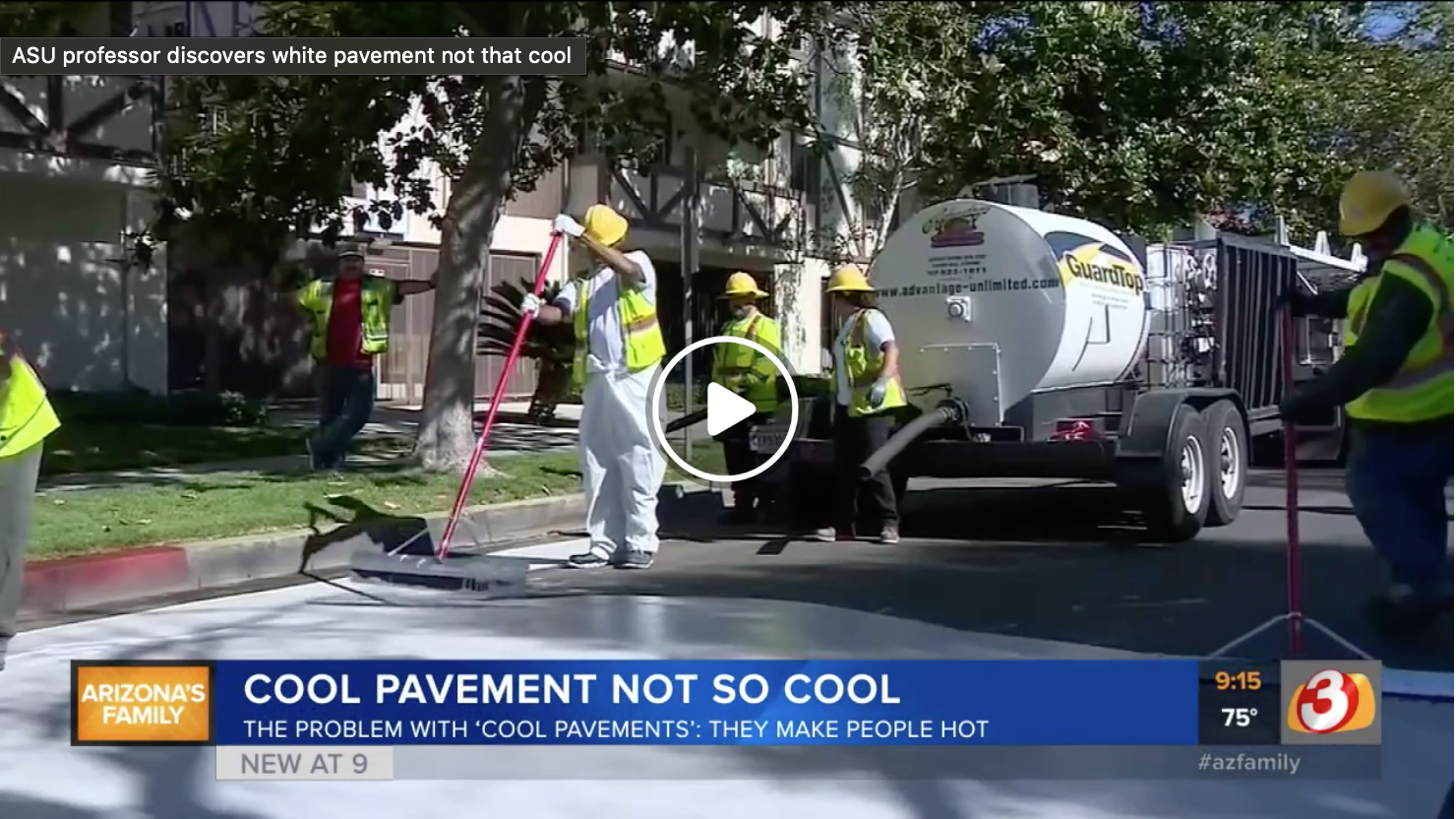
BS/3TV (October 2019): ASU researcher finds white 'cool pavements' actually make YOU hotter
Some Southern California suburbs have painted streets white to try and cool everyone down. But one ASU researcher has found something “not so cool” about the whole idea.
It was a sight to see nearly two years ago when some Southern California neighborhoods painted their streets white, hoping a lack of black pavement was a hack to stay cool.
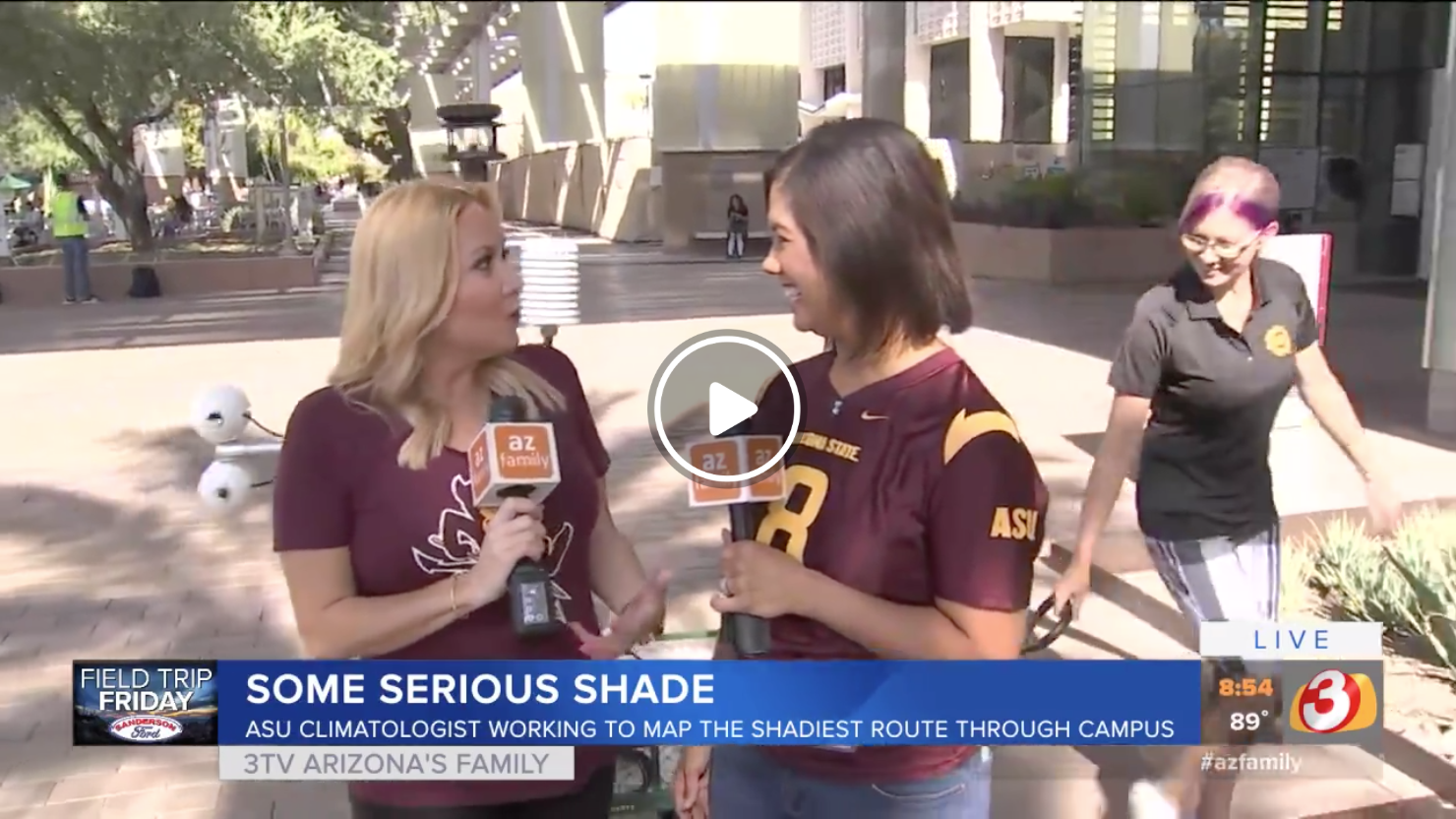
AZ Family (August 2019): 'Shadow hunter': ASU climatologist helps others find shade from Arizona sun
An Arizona State University climatologist is helping others seek shade during the hot summer sun in Arizona.
Ariane Middel is a climatologist with the school of geographical sciences and a few years ago, she led a study to investigate thermal comfort.
ASU Cronkite News (July 2019): 50 Grades of Shade
The July 17 Cronkite newscast featuring the SHaDE Lab's 50 Grades of Shade project
The ASU Cronkite News (July 2017): Mobile weather cart collecting Tempe
temperature data
Cronkite News reports on an event preparing students for the school year, new legislation that could help prevent hot car deaths and an overseas trip for the ASU men’s basketball team.
Youtube (September 2018): HeatMappers Walk and Ride
The City of Phoenix HeatReady team partnered with the Nature Conservancy, Museum of Walking, LLC, Phoenix Housing Department, Phoenix Revitalization Corp., Arizona State University’s Urban Climate Research Center and Knowledge Exchange for Resilience for the HeatMappers Walk & Ride
Catalyst PBS (April 2019): Car interior temperature
“Catalyst” follows climatologists who are tracking the rapid rise of a car’s interior temperatures during the summer.
The ASU Cronkite News (July 2017): Mobile weather cart collecting Tempe temperature data
Cronkite News reports on an event preparing students for the school year, new legislation that could help prevent hot car deaths and an overseas trip for the ASU men’s basketball team.
The ASU Cronkite News (July 2017): Mobile weather cart collecting Tempe temperature data
Cronkite News reports on an event preparing students for the school year, new legislation that could help prevent hot car deaths and an overseas trip for the ASU men’s basketball team.
KTAR (June 2017): ASU researcher hopes shade-tracking tool will help pedestrians
This past week has been one of the hottest weeks in the Valley’s history, with records getting broken daily thanks to the 115-plus degree weather.
To keep cool, it’s important to stay hydrated and stay in the shade. One Arizona State University researcher thinks the latter is more important than some people realize.
Ariane Middel has created a tool that tracks shade, in hopes of distributing her research for future use on what route a person should choose when going somewhere.
Audio/Radio
KJZZ (August 2022): Q&AZ: Does gravel landscape negatively impact the urban heat island effect in Arizona?
In an effort to conserve water during the long-term drought, residents around the Southwest are tearing out their grass and opting for desert landscaping — also called hardscape — that primarily features gravel.
Through KJZZ’s Q&AZ project, a listener asked: Does hardscape contribute negatively to the urban heat island effect?
NPR All Things Considered (May 2022): A block in Massachusetts is the test site for ways to cool cities in the summer
In Chelsea, cooling an urban heat island one block at a time...
NPR The Show (June 2021): New Research: Some Types Of Shade Better Than Others At Keeping Us Cool
Trees can provide relief from the heat during the summer months, but ASU researchers say that other forms of shade can also be effective.
Ariane Middel wants to be clear on this: Trees have a lot of benefits, including shade. But in some urban spaces, trees are not an option. Sewer lines, cables and other underground infrastructure can make it difficult to plant them. So the assistant professor and her team set out to measure temperature and other factors in various types of urban shade.
ClimateOne Podcast (May 2021): Hot Cities, Methane Leakers and the Catholic Church
In 2017, it got so hot in Phoenix that airplanes literally could not take off, and airlines cancelled dozens of flights. Extreme heat is likely to become more common, and last longer, as climate disruption continues.
The National Oceanic and Atmospheric Administration recently released an updated set of so-called "climate normals" – averages it compiles every decade. And to no one’s surprise, they showed that our world has gotten warmer.
“Heat is really a silent threat. You can’t really see it. So it’s different from your hurricane or flooding or tsunami where you immediately see the impact,” says Ariane Middel, an assistant professor at Arizona State University and Senior Scientist with the Global Institute of Sustainability and Innovation.
KJZZ (July 2020): How Reflective Paint Can Combat The Urban Heat Island Effect
Phoenix has started a pilot program aimed at mitigating the urban heat island by applying cool pavement to a number of streets and a park. City officials say the cool pavement has the potential to reverse increasingly warmer nighttime temperatures. Reflective paint has also been tried in different cities on other surfaces, including roofs and sidewalks. The idea is the paint will make those surfaces cooler and make them more comfortable for people. But new research shows it might not always be that effective at the second part of that equation.
NPR Here & Now (September 2019):
Phoenix Residents Will Need To Adapt To An Even Hotter Climate
The hottest day in Phoenix history is June 26, 1990, when temperatures reached 122 degrees — but thanks to climate change, the desert city’s sweltering heat could break this record.
In hot places like Phoenix, residents rely on taking a break from the heat at night when temperatures significantly drop. But over the last half-century, the average nighttime temperature in Phoenix has increased by 9 degrees...
KJZZ (September 2018): Sweating For Science: Walkers Help Find Solutions To Urban Heat
People in Phoenix’s Edison Eastlake neighborhood took part in a 2.5-mile walk Saturday. But they weren’t necessarily participating to get exercise.
The Heatmappers Walk and Ride started at Edison Park as part of a public science project. Arizona State University, the Museum of Walking and other organizations are trying to find ways to bring nature into cities and combat urban heat.
KJZZ (September 2018): Researchers Looking For More Localized Data On Urban Heat Island
Scientists have been studying the urban heat island effect for a while now. But more recently, they’ve been trying to get more specific, localized data.
That could allow researchers to figure out how a specific part of a city heats up and cools down. One way to do that is to use something called local climate zones.
To explain what that is, Ariane Middel, an assistant professor with ASU’s School of Arts, Media and Engineering, joined The Show.
KJZZ (January 2018): Studying Extreme Weather's Impact On Cities, From Hot To Cold
The year 2017 was the warmest year on record in Phoenix, and so far in the New Year, we’ve seen high temperatures in the mid- to upper 70s.
Meanwhile, on the East Coast, high temps have been below freezing for much of the month. It’s in this context that ASU and the University of Buffalo are teaming up to study how extreme weather impacts American cities — both on the hot and cold side of the spectrum.
To talk more about this research, I’m joined by Nick Rajkovich, an assistant professor in the Department of Architecture at the University of Buffalo, and Paul Coseo, an assistant professor of Landscape Architecture at the Design School at ASU.

